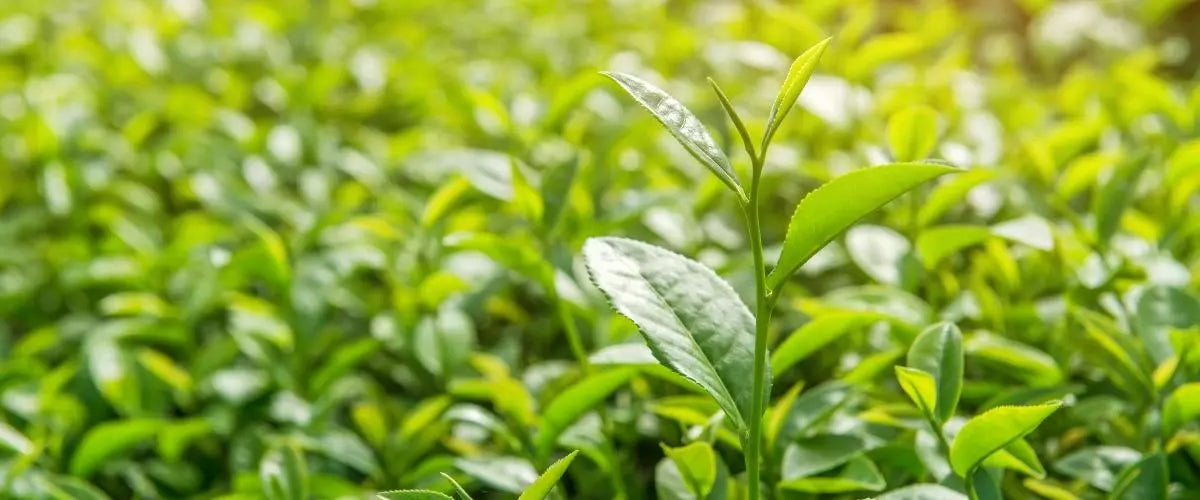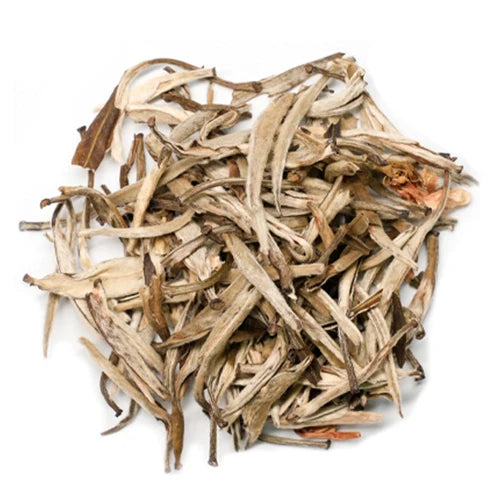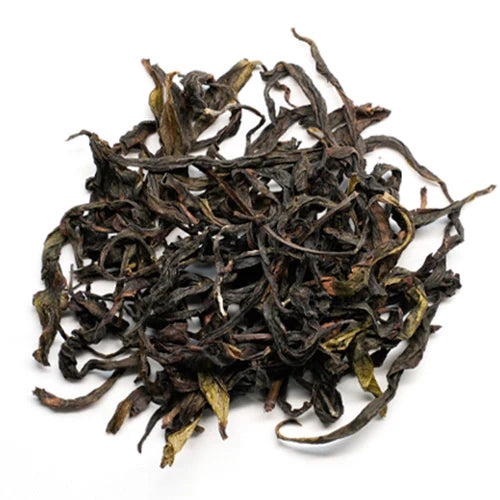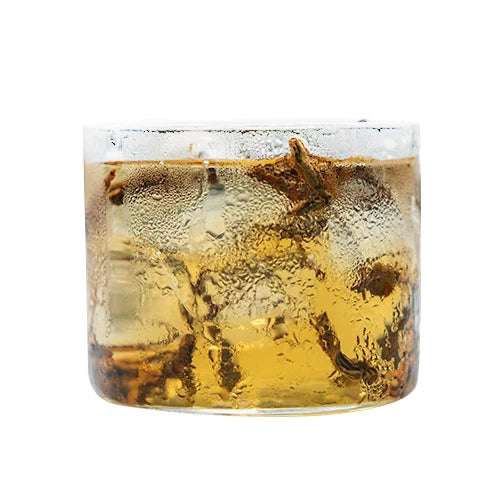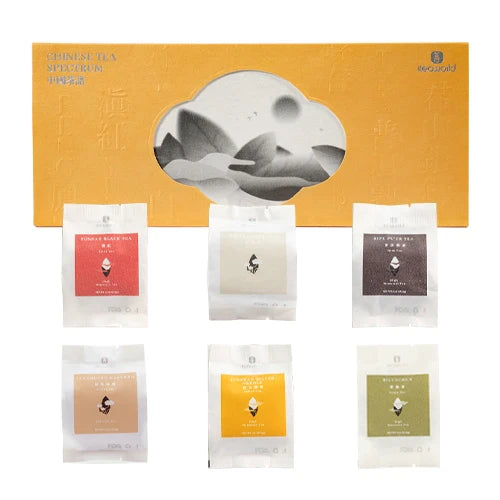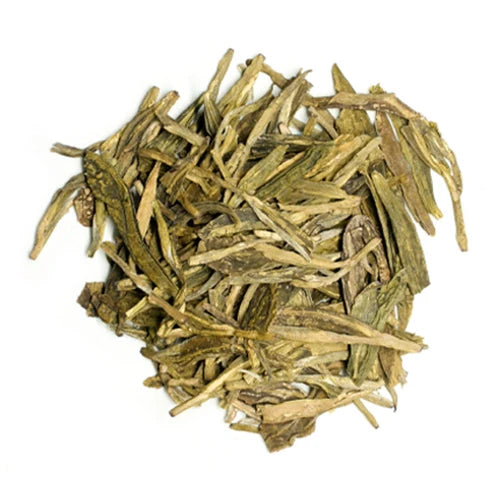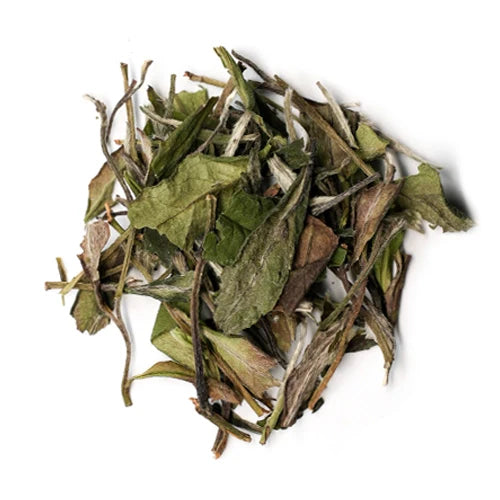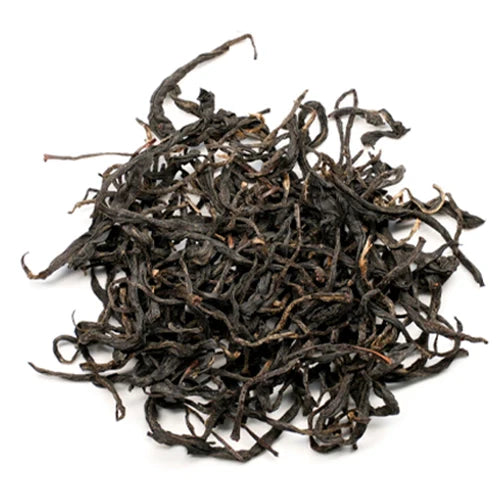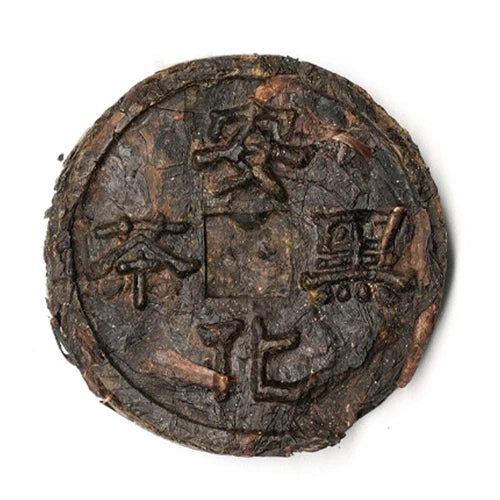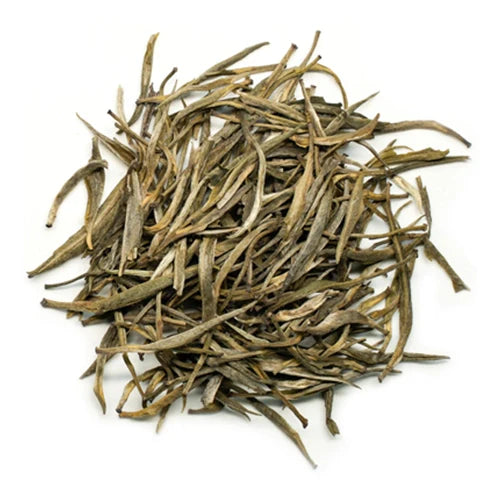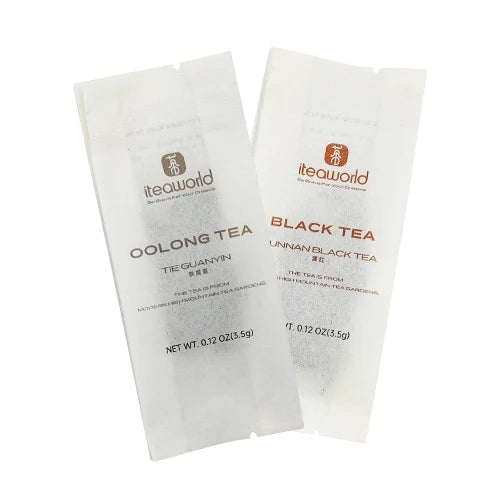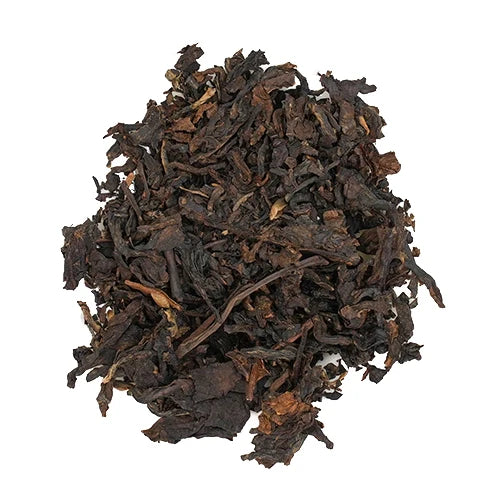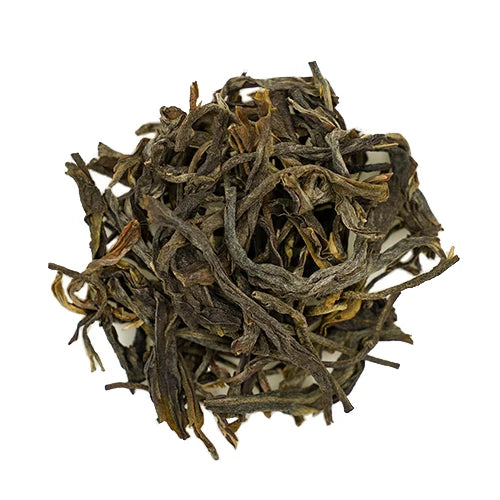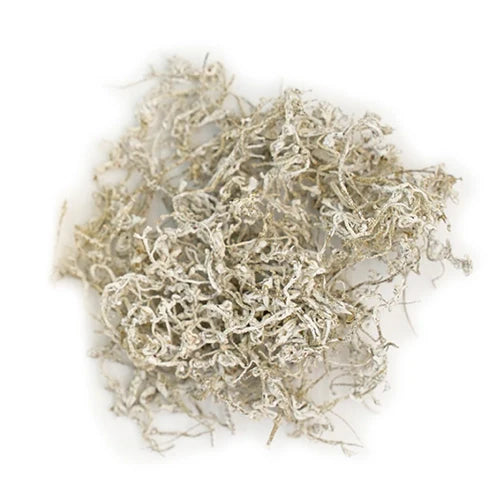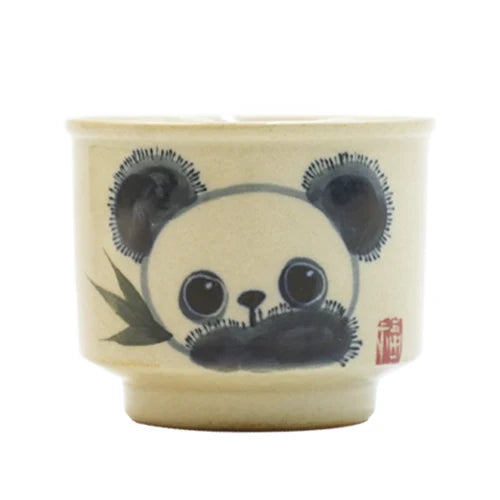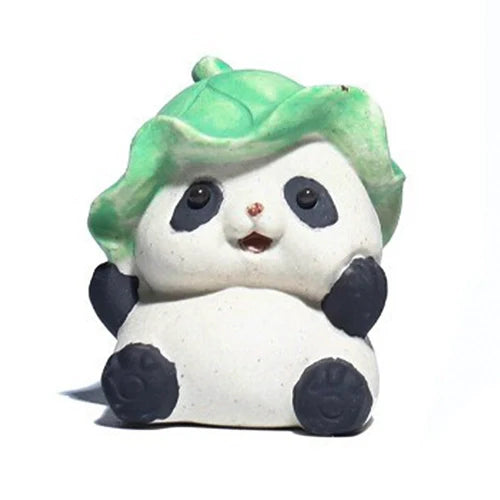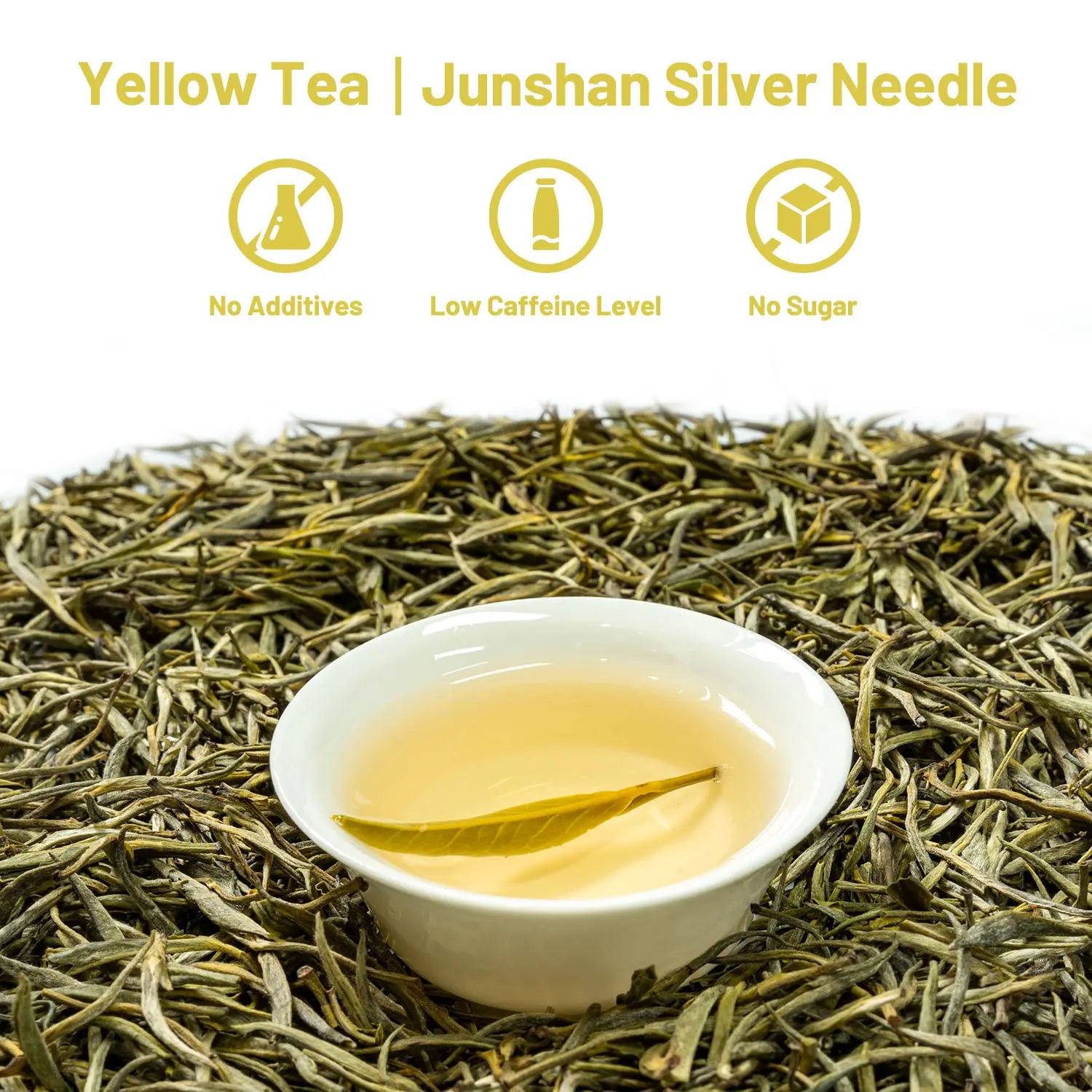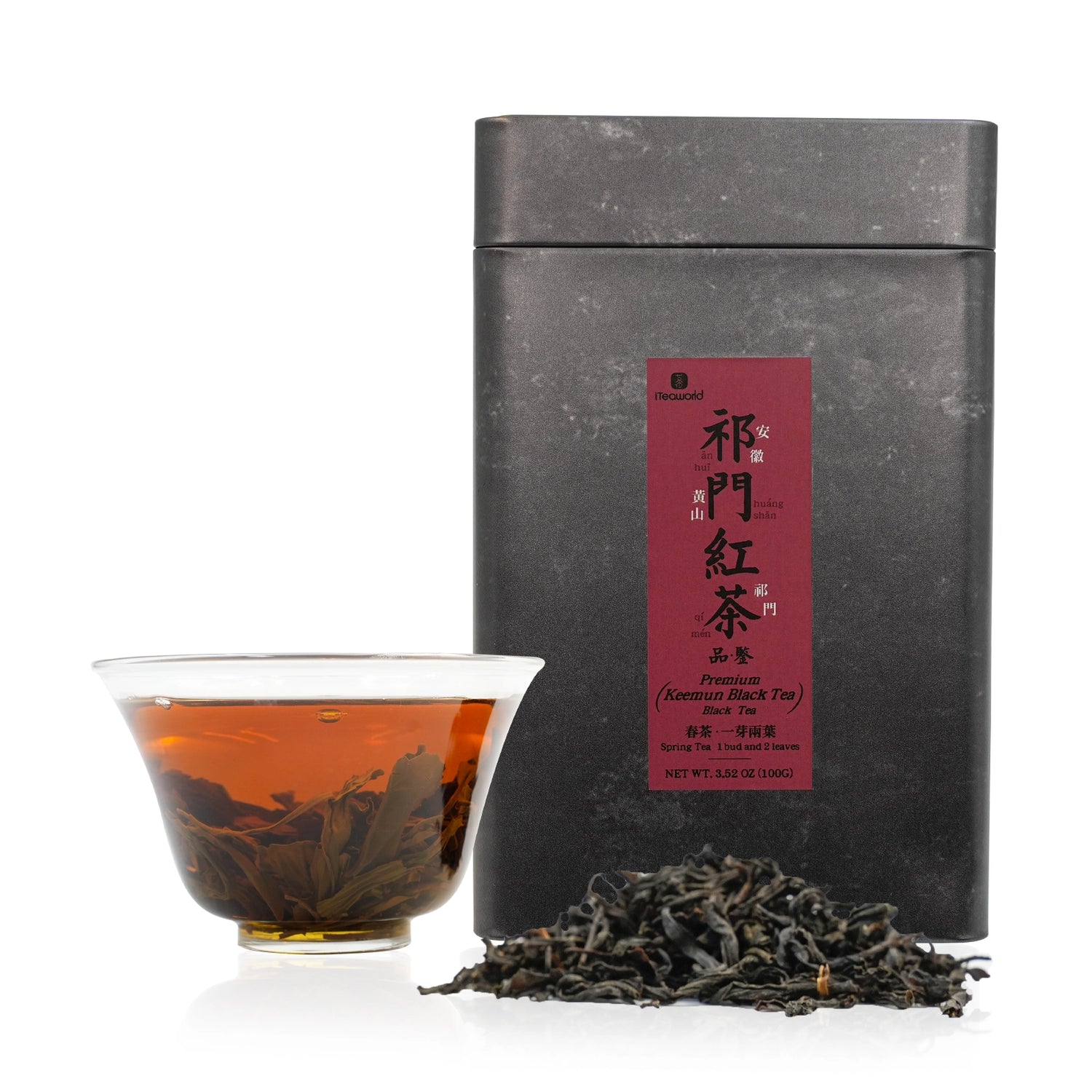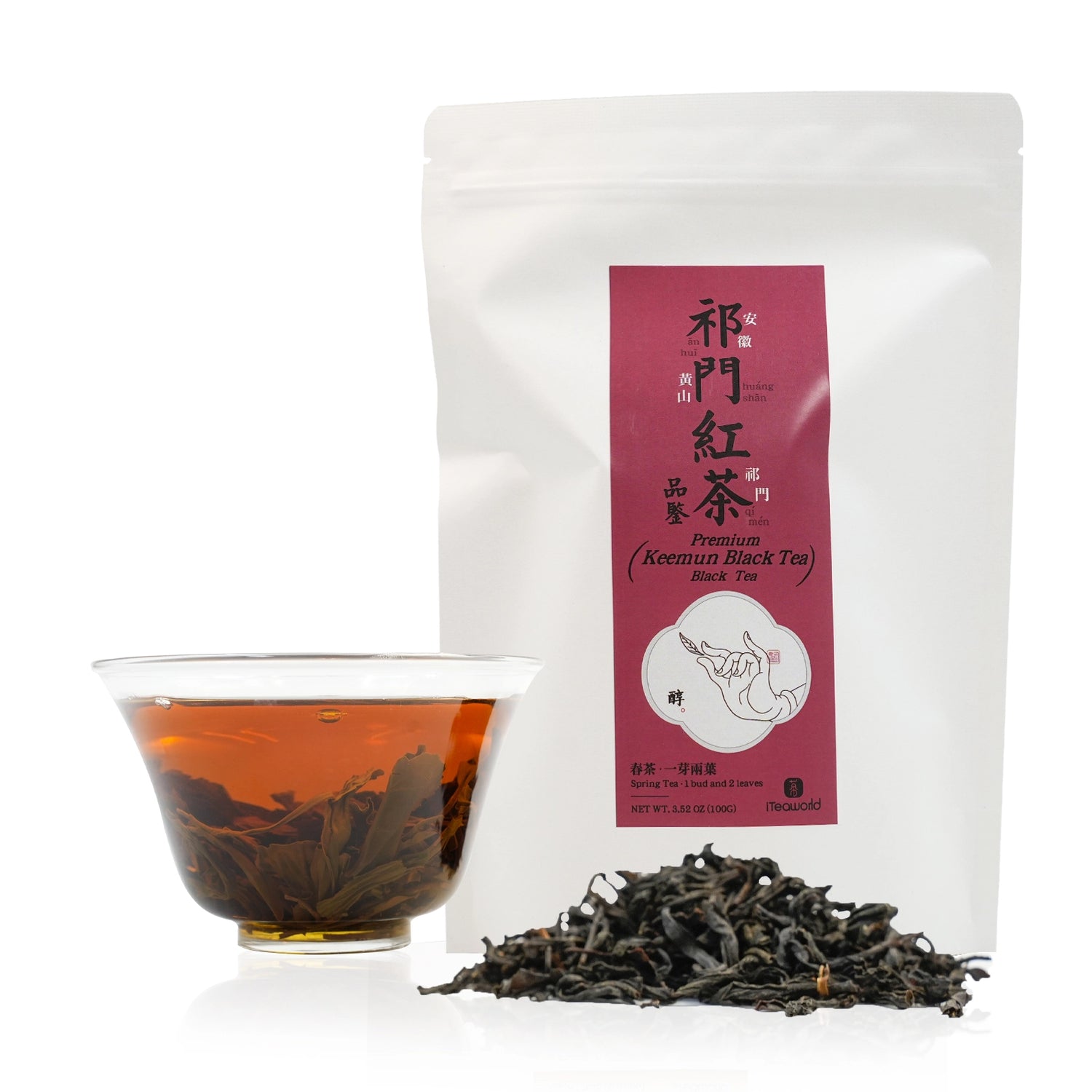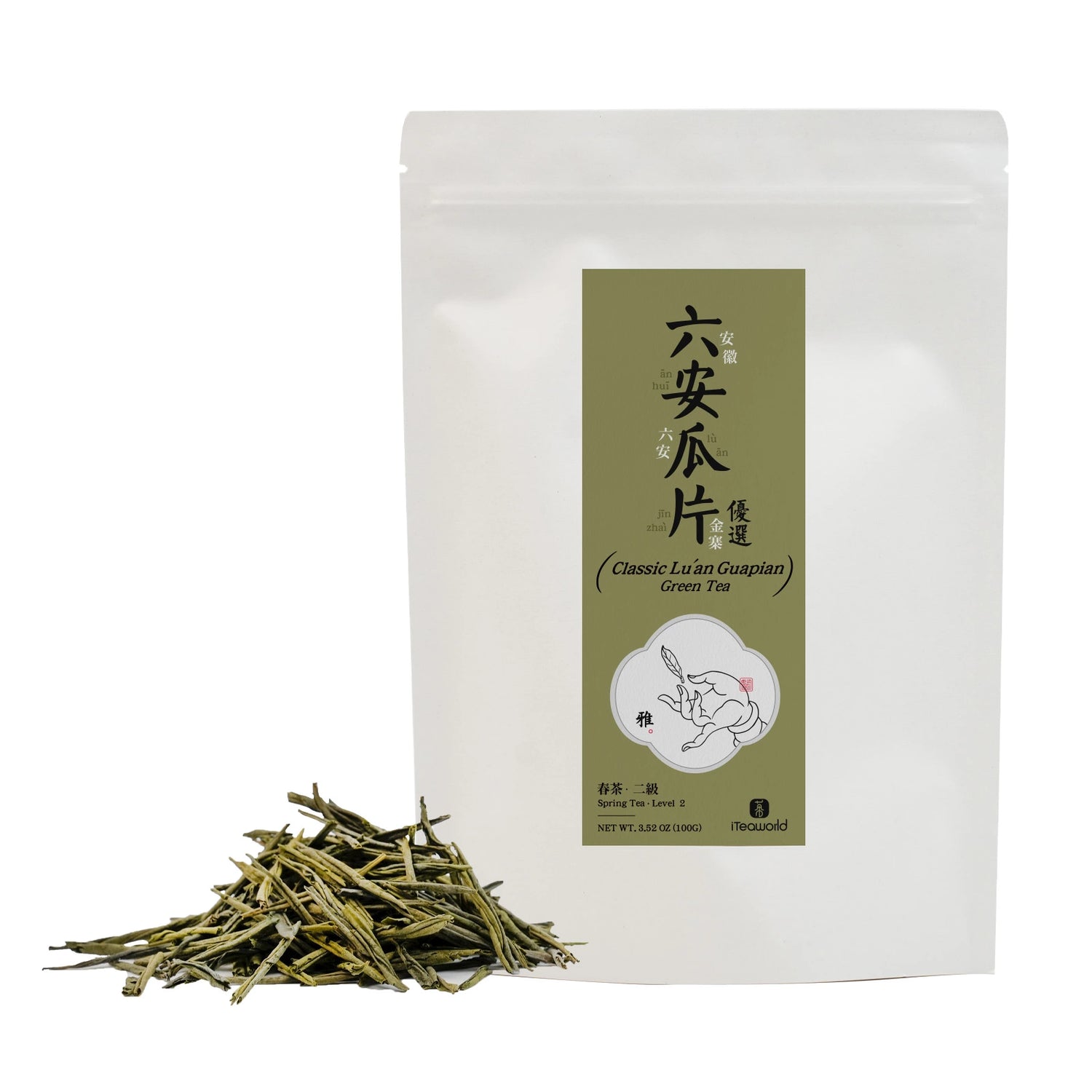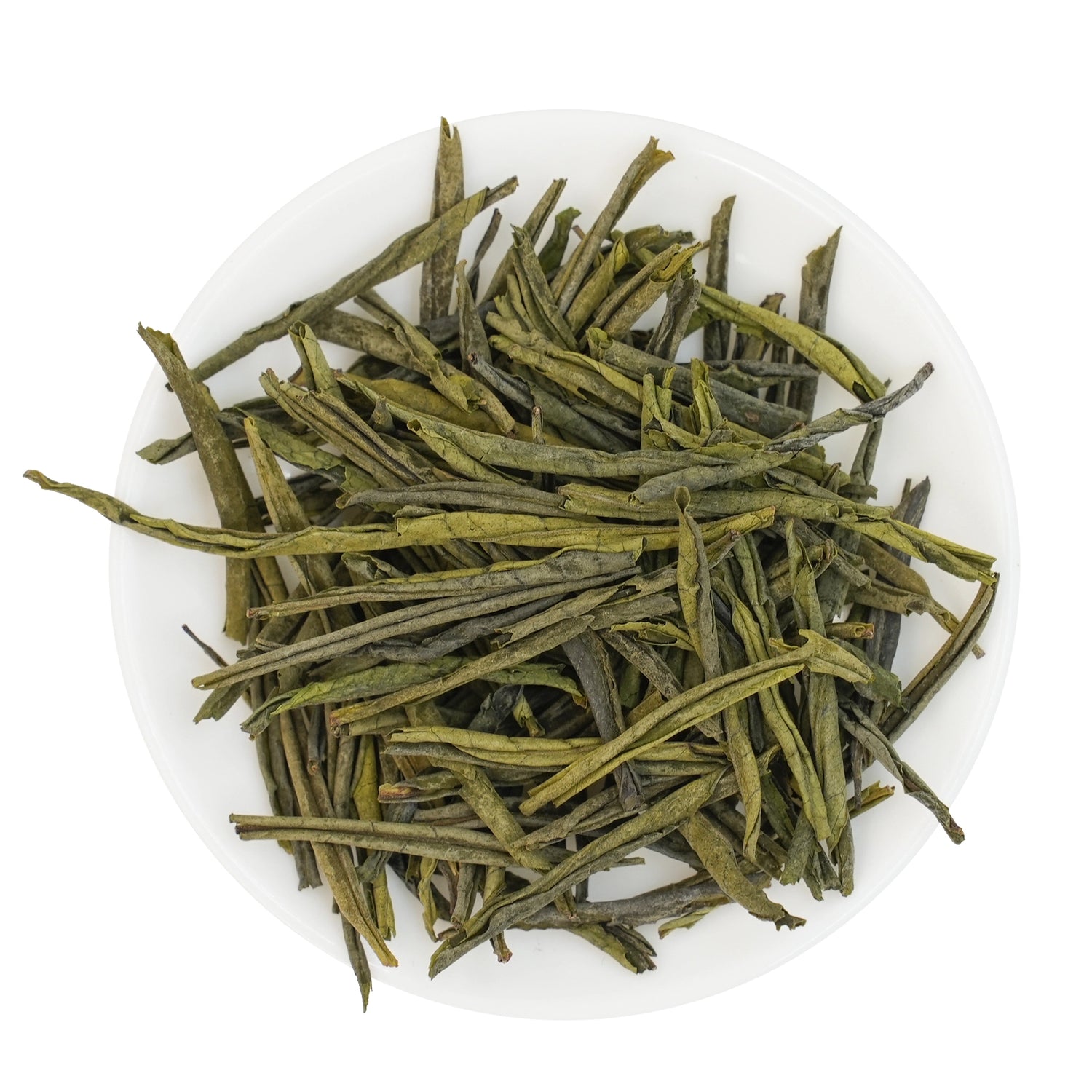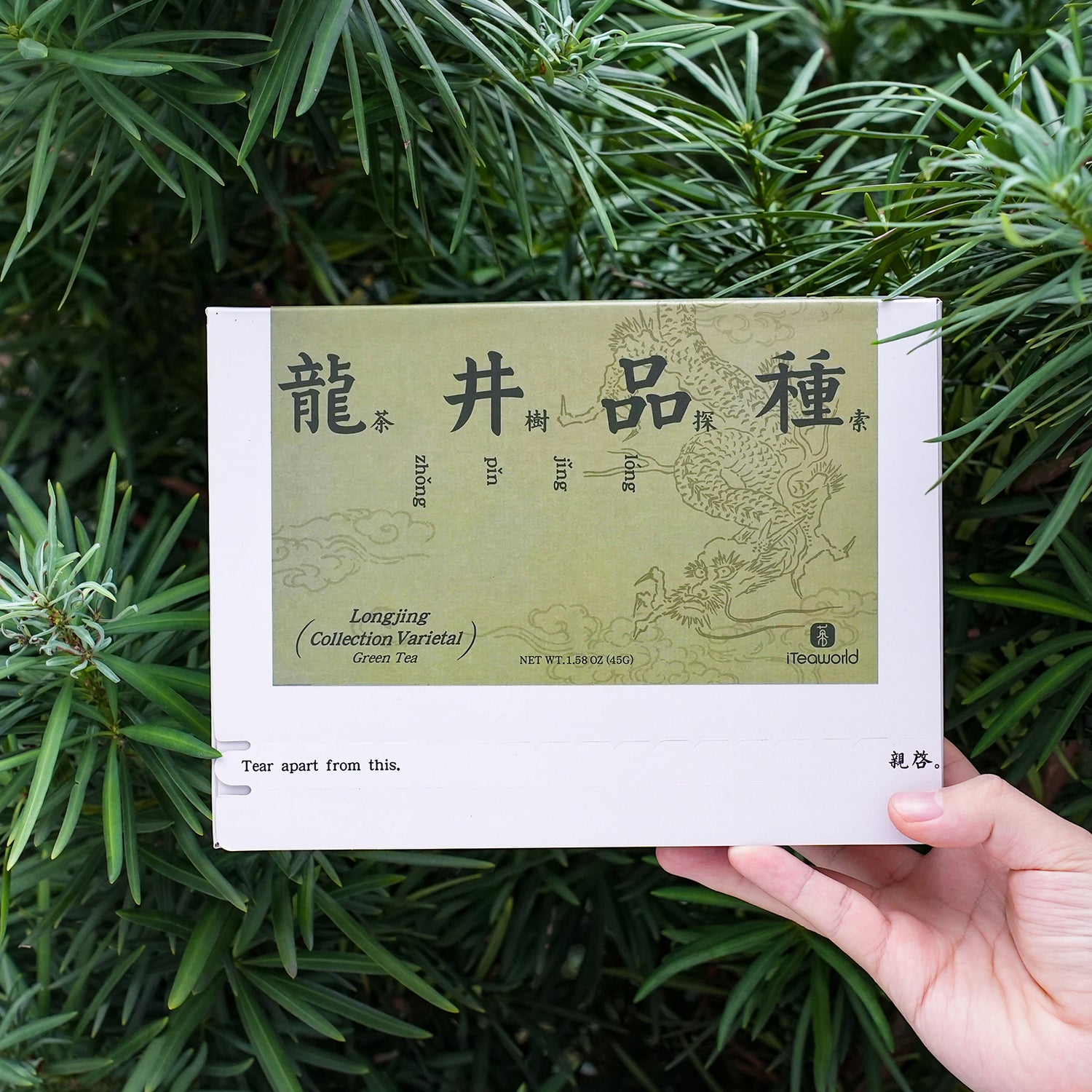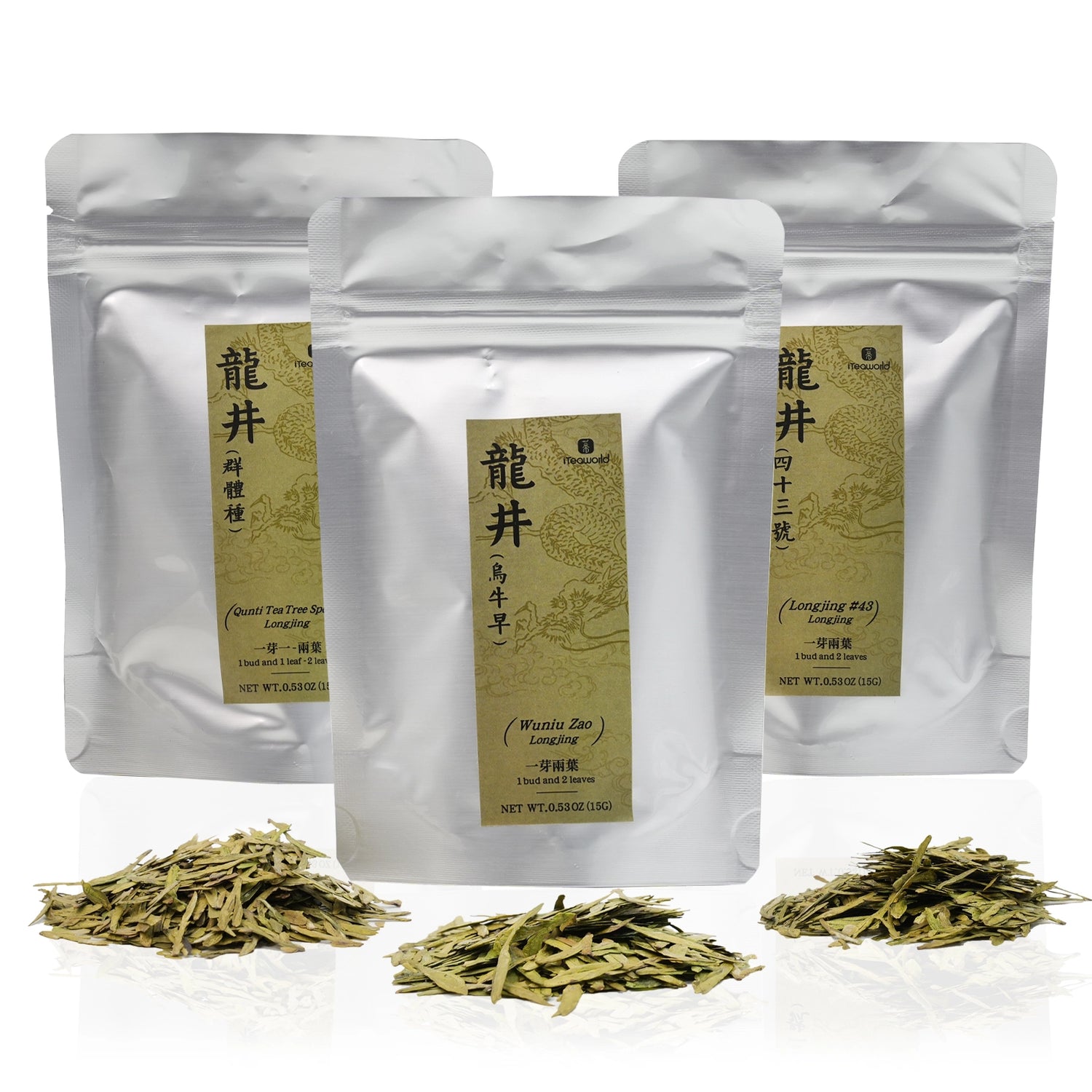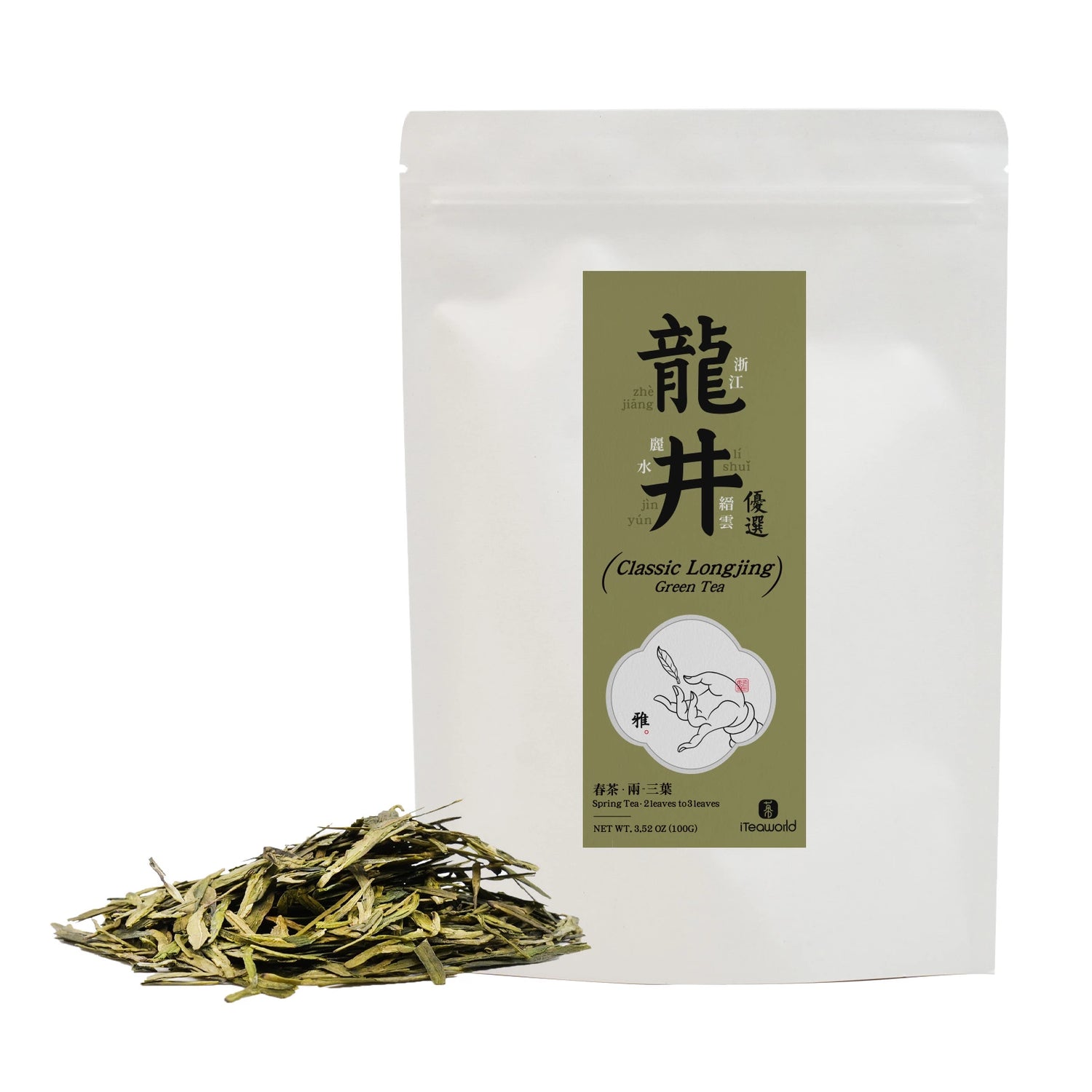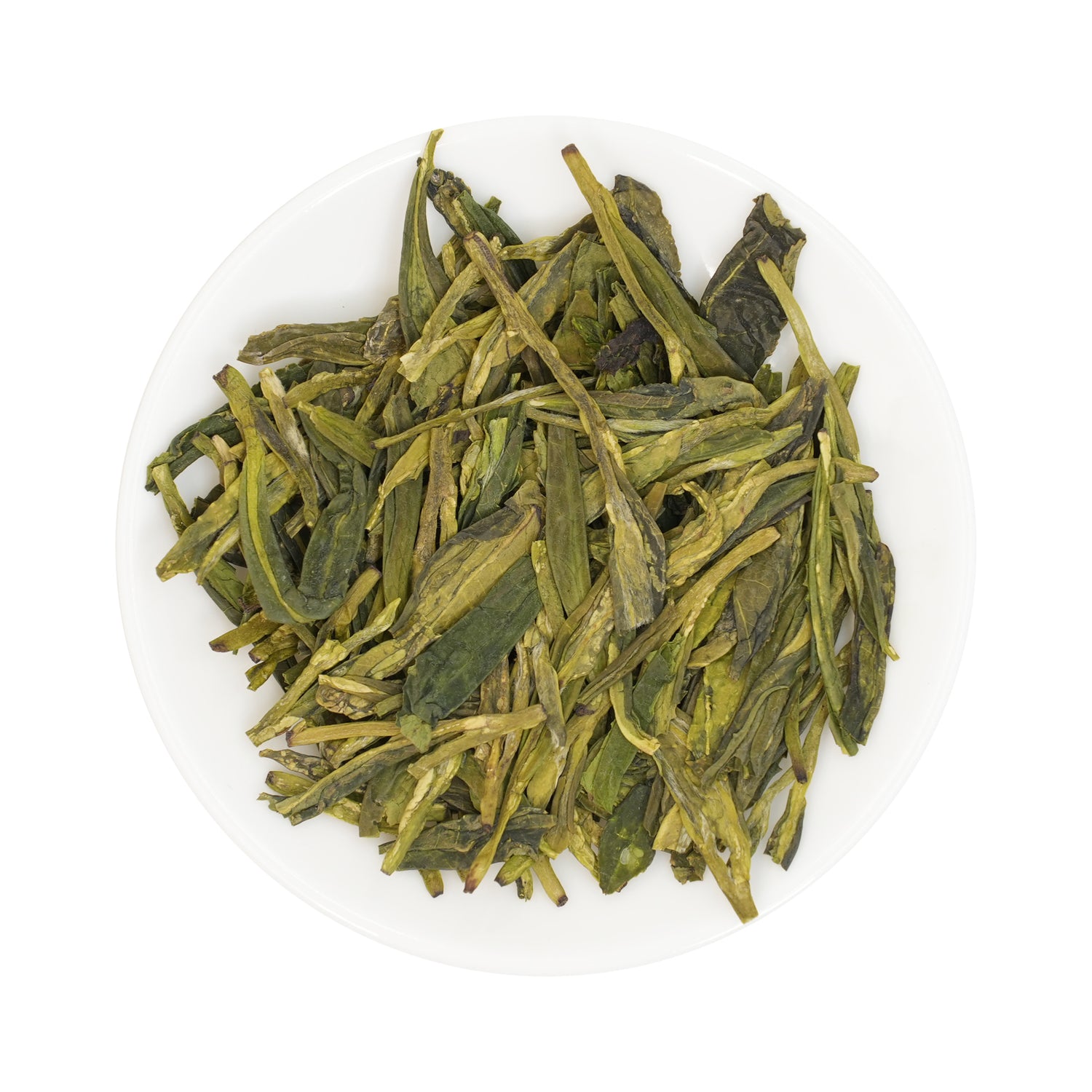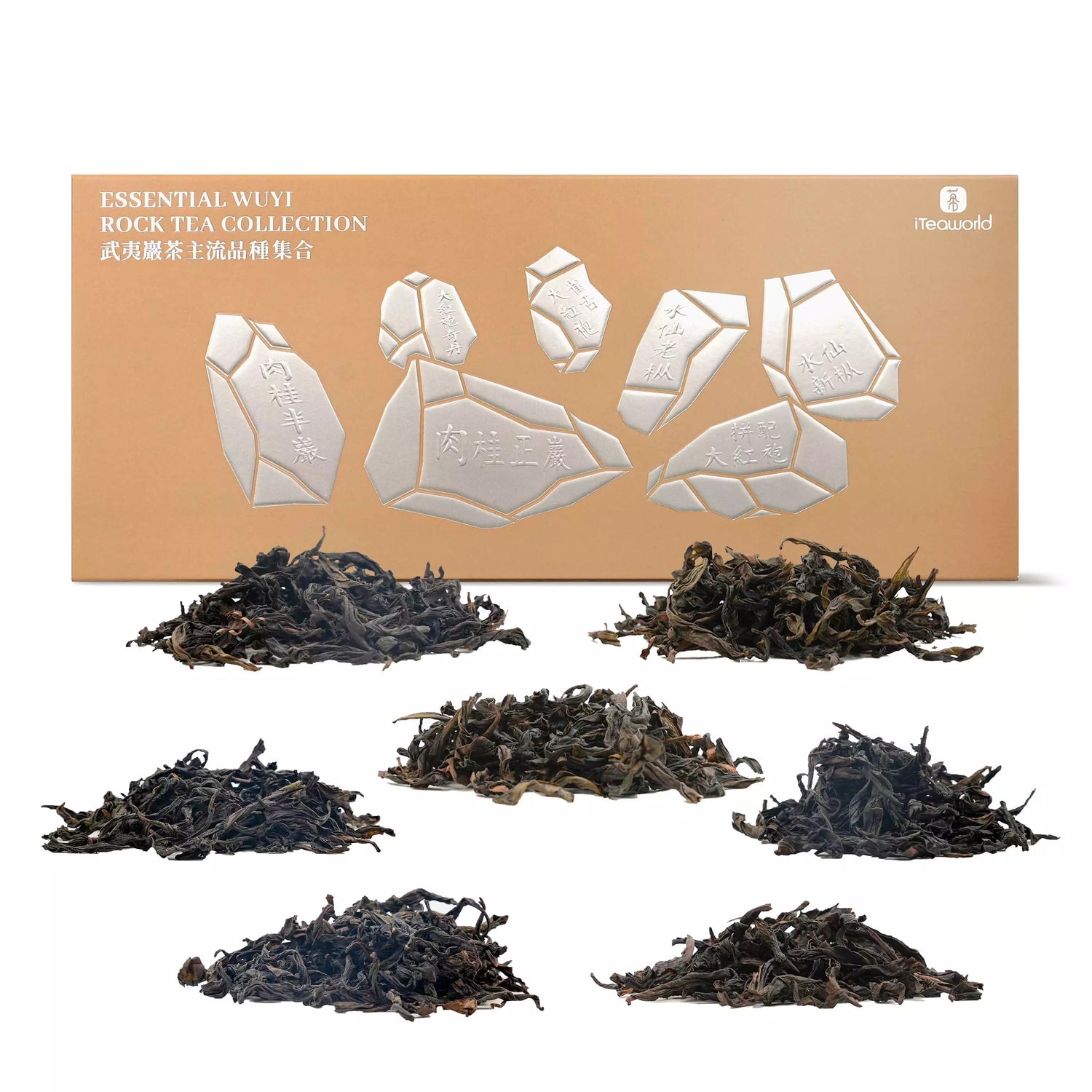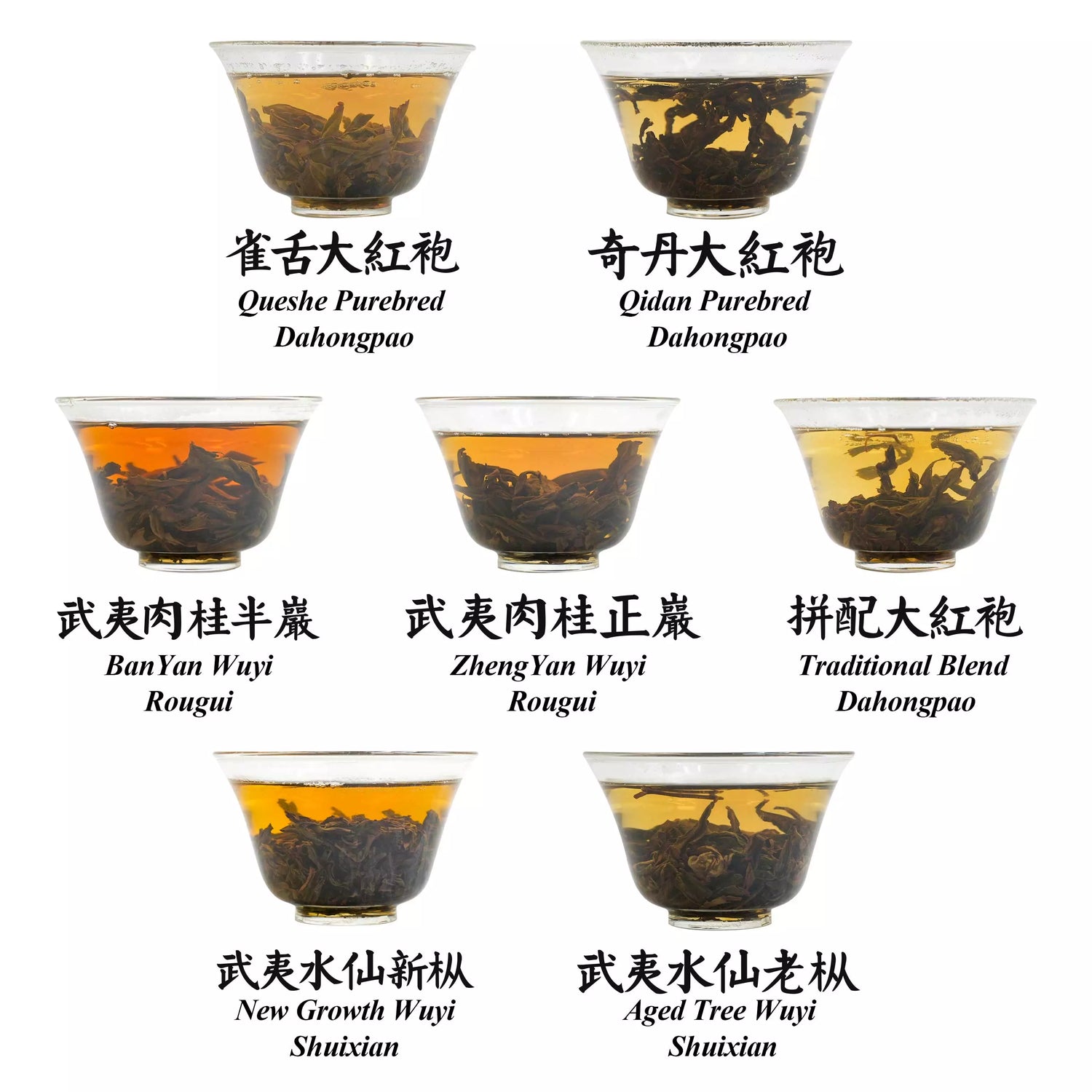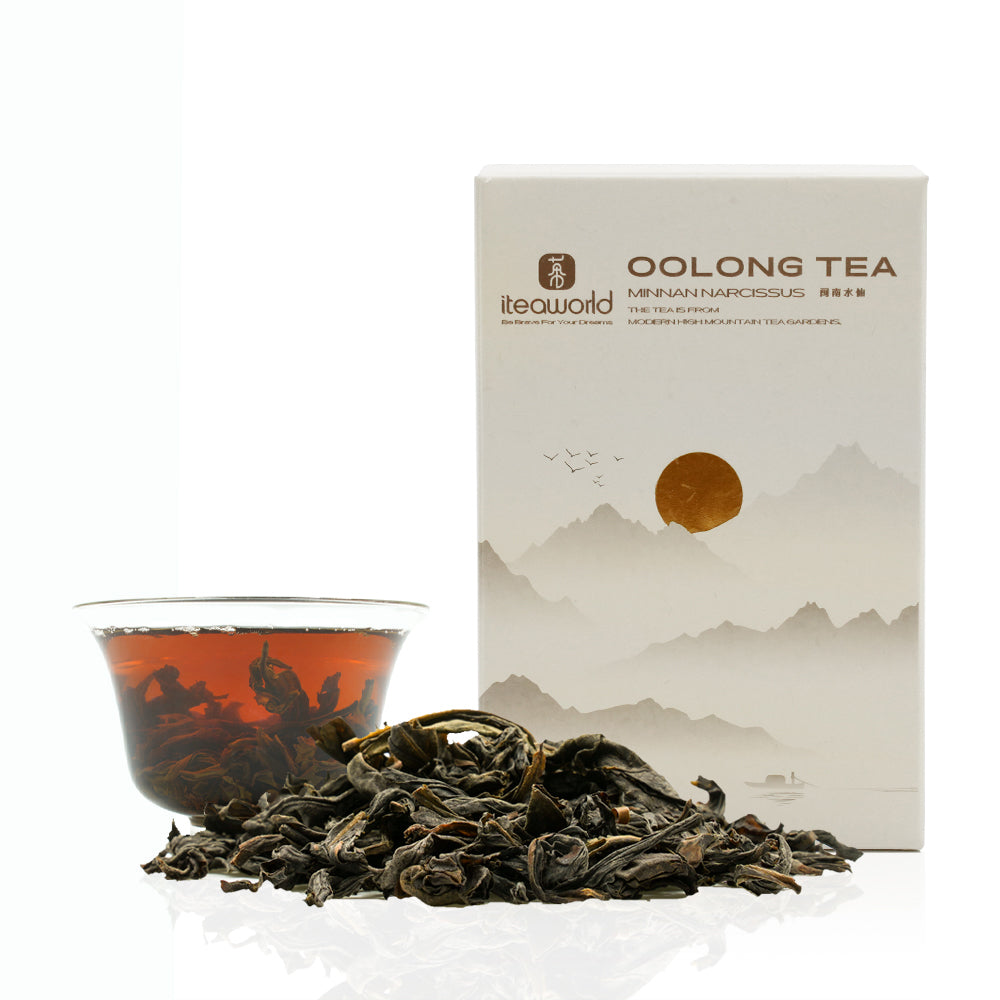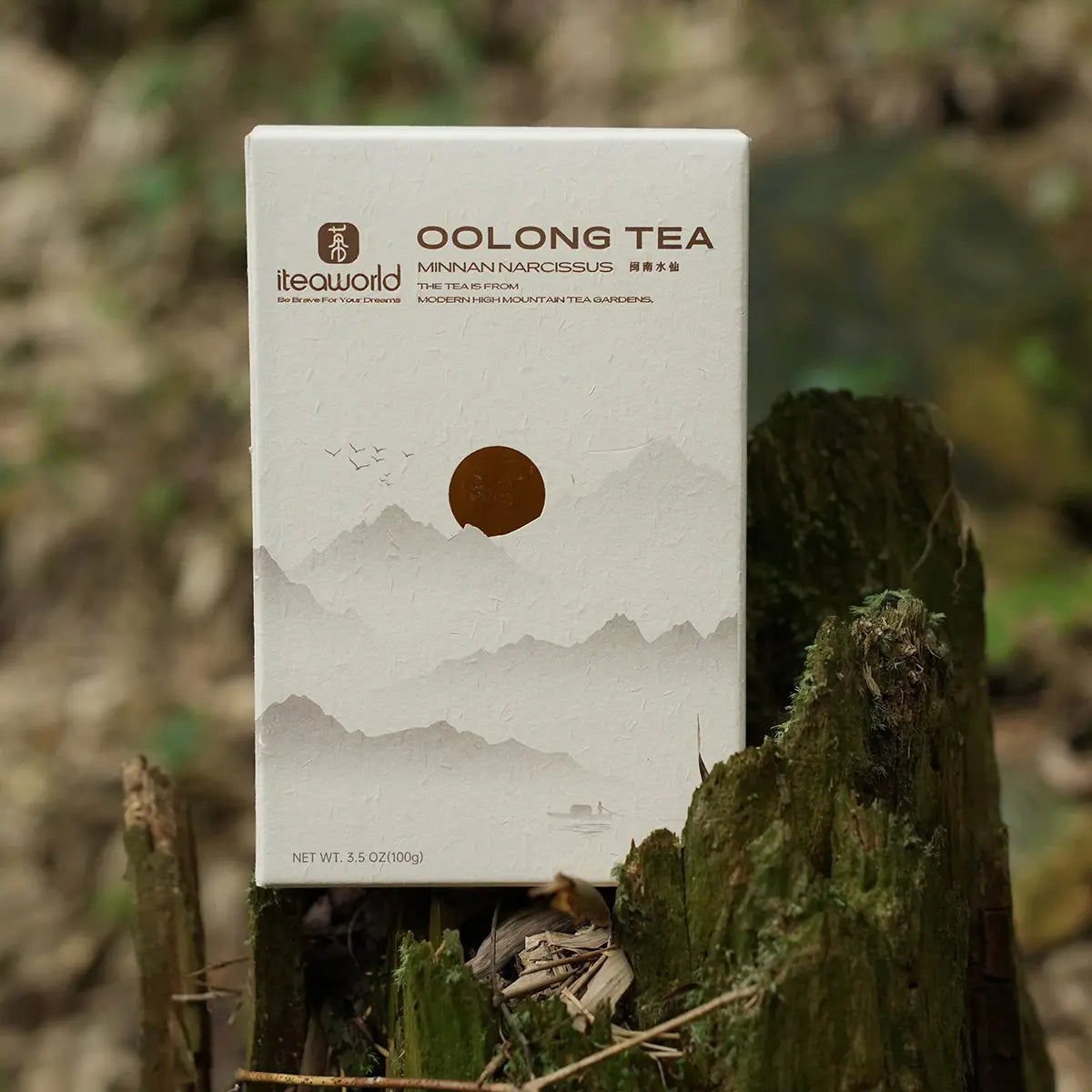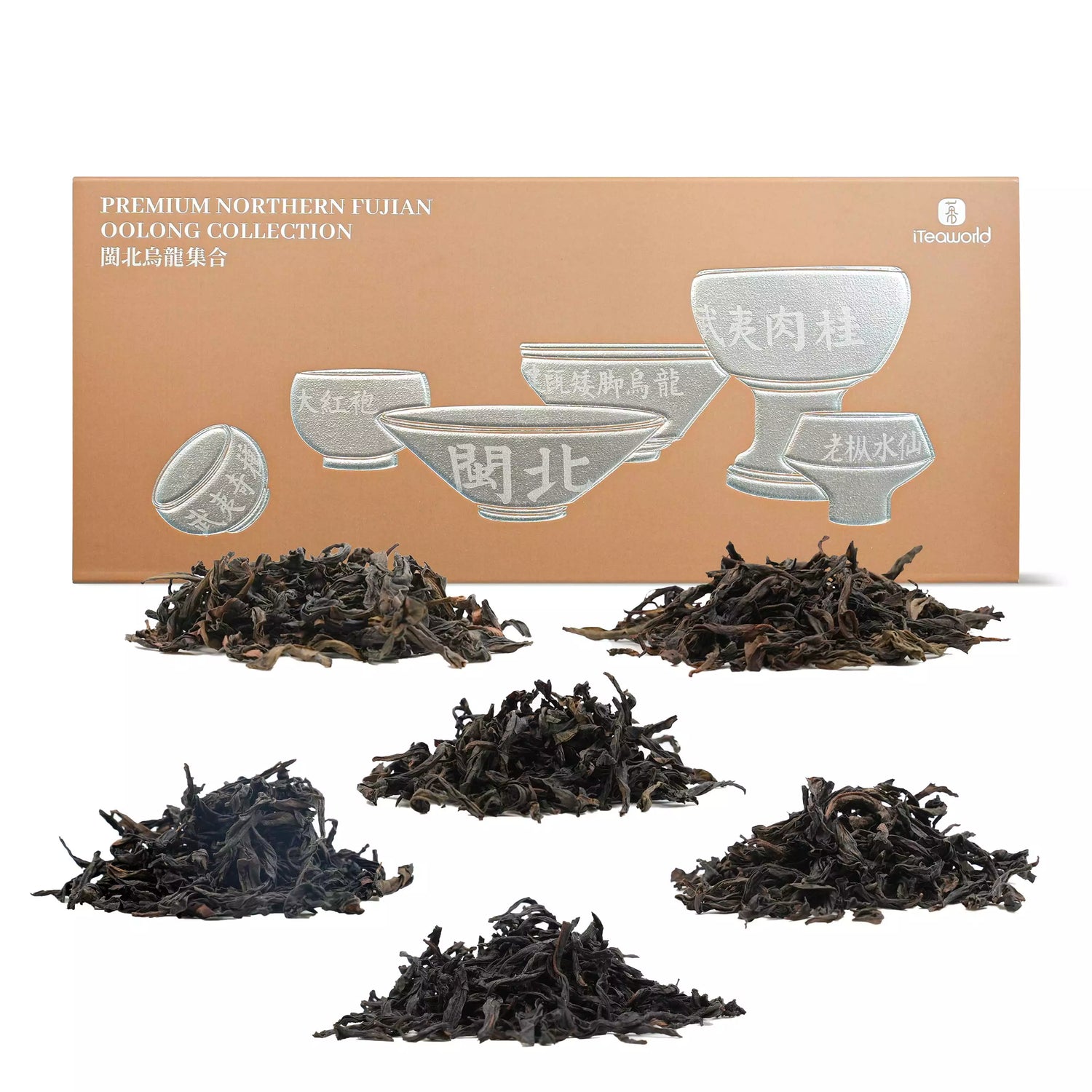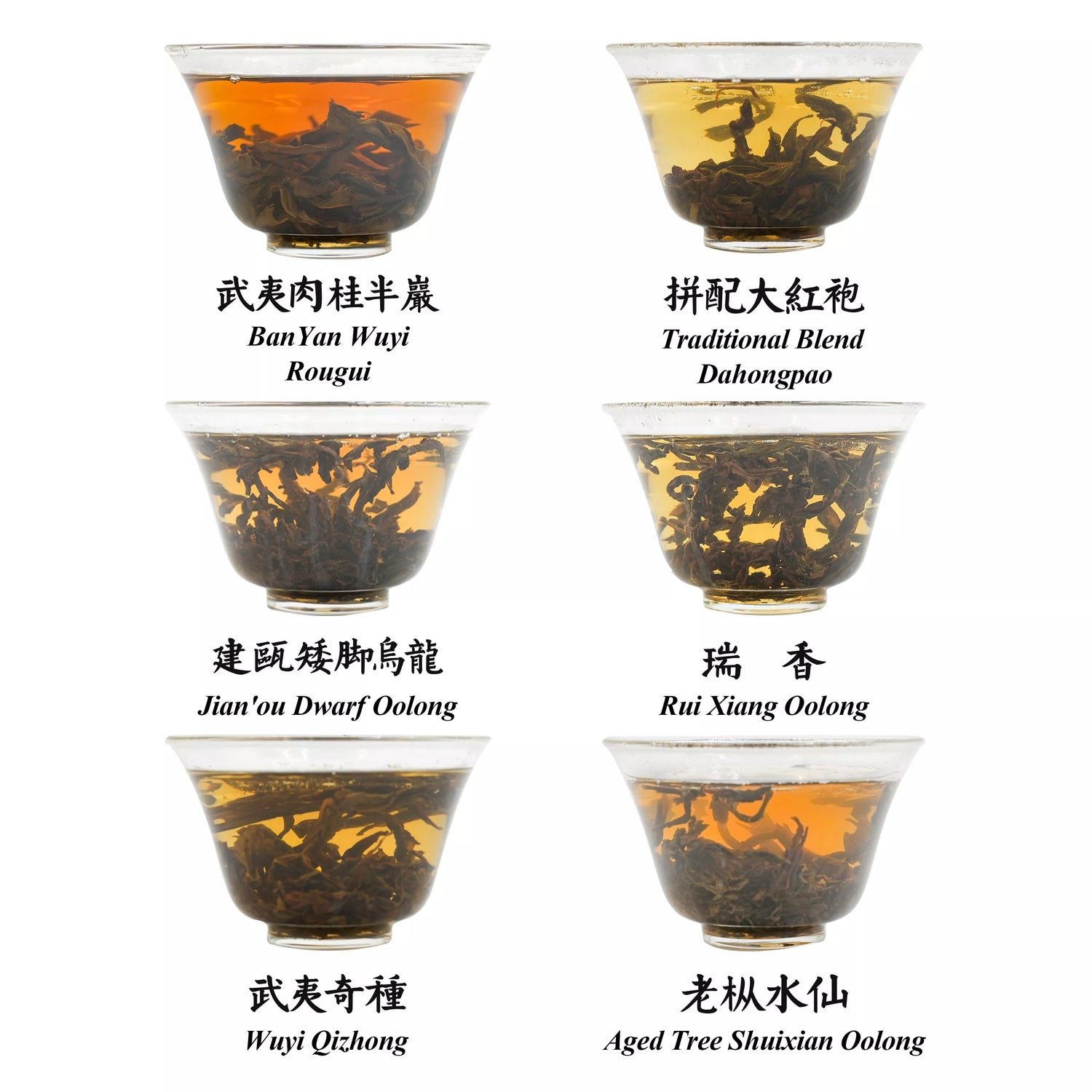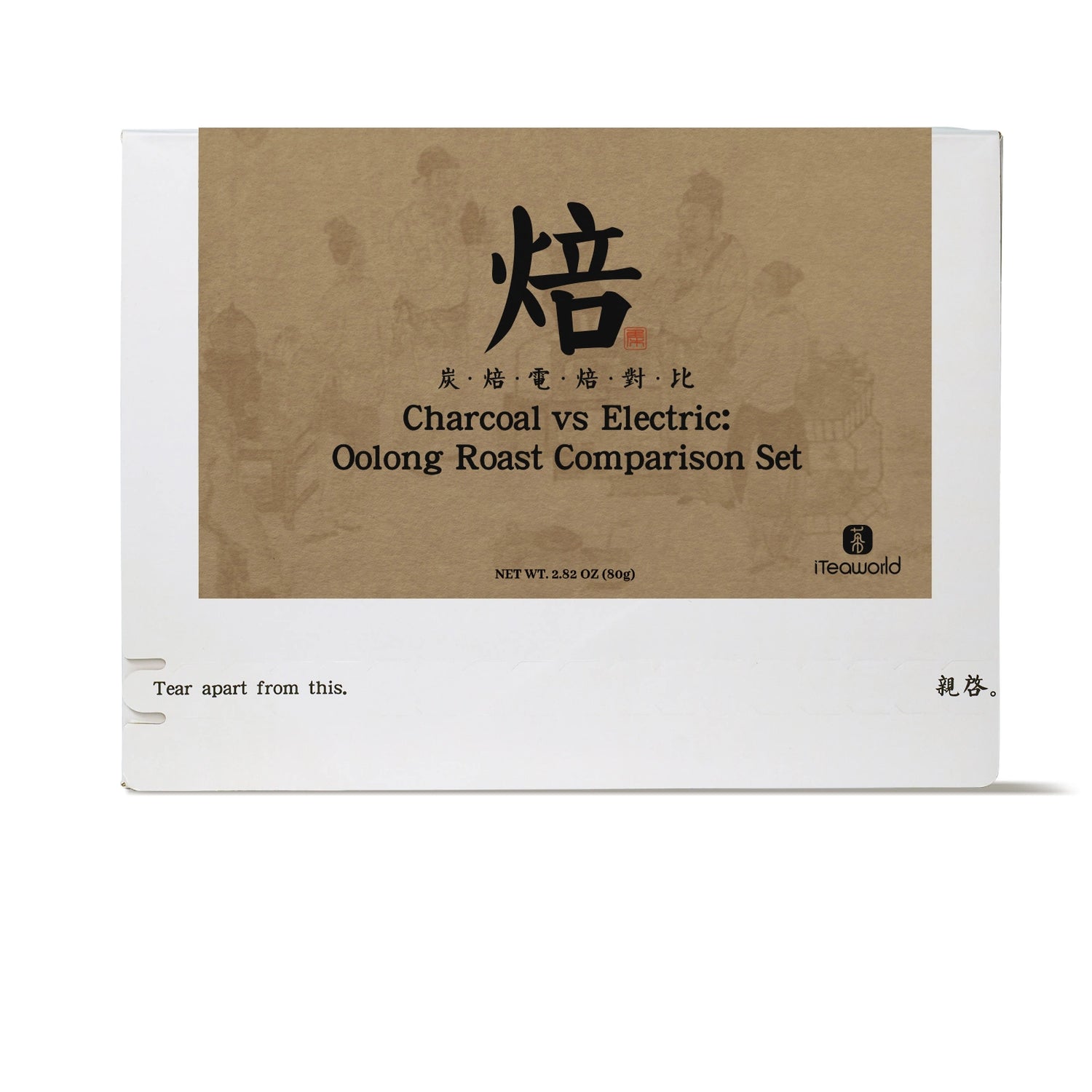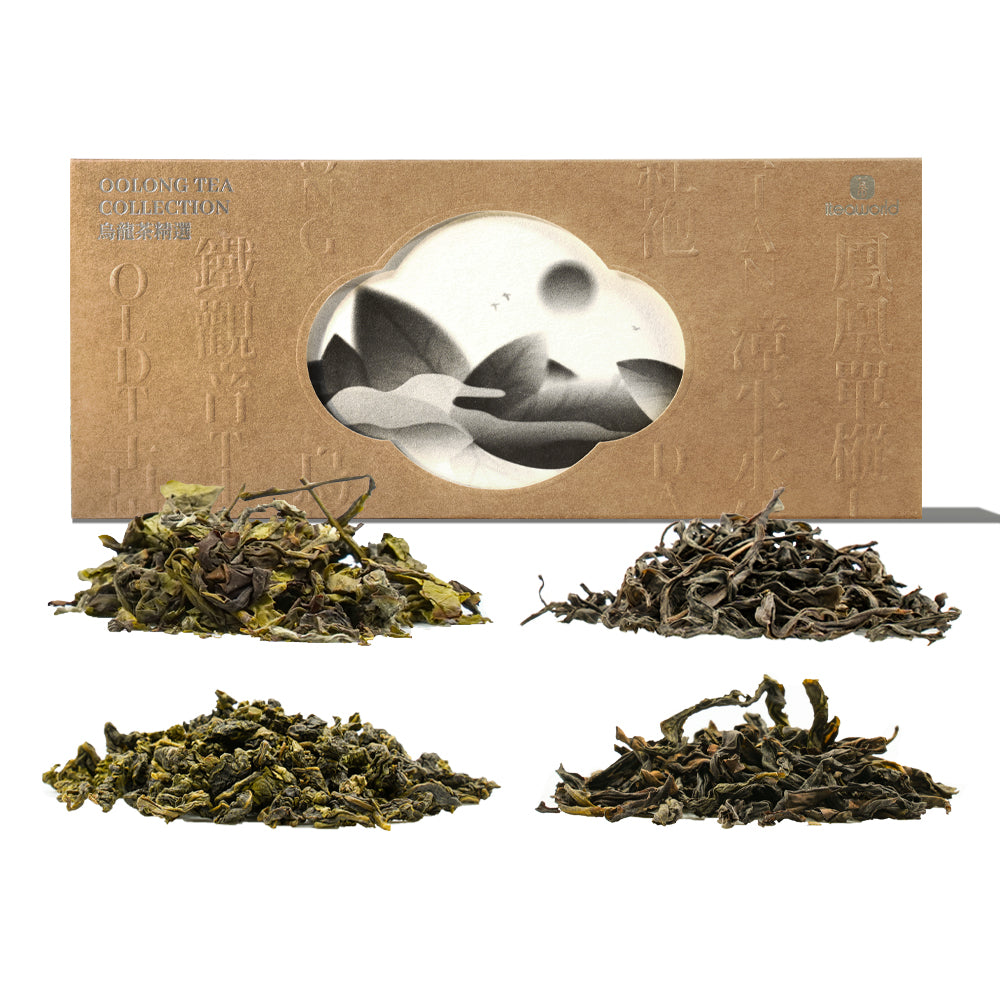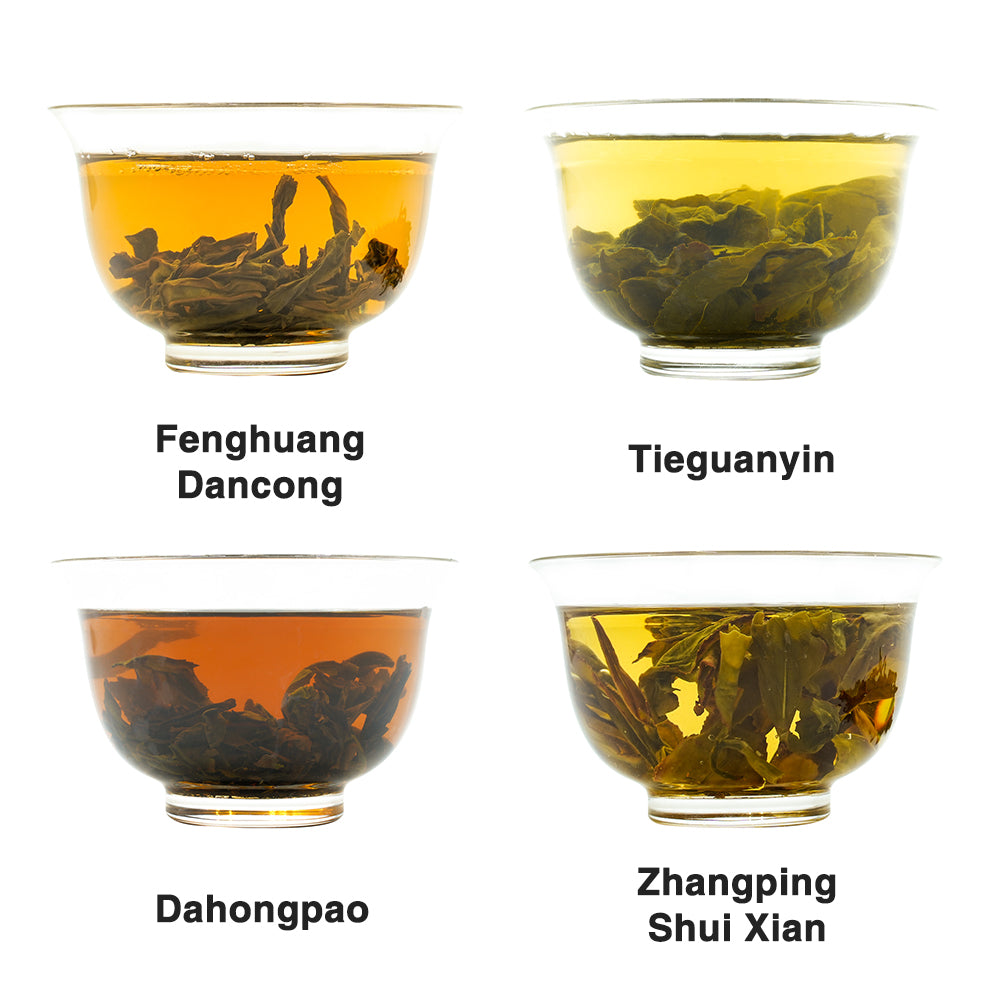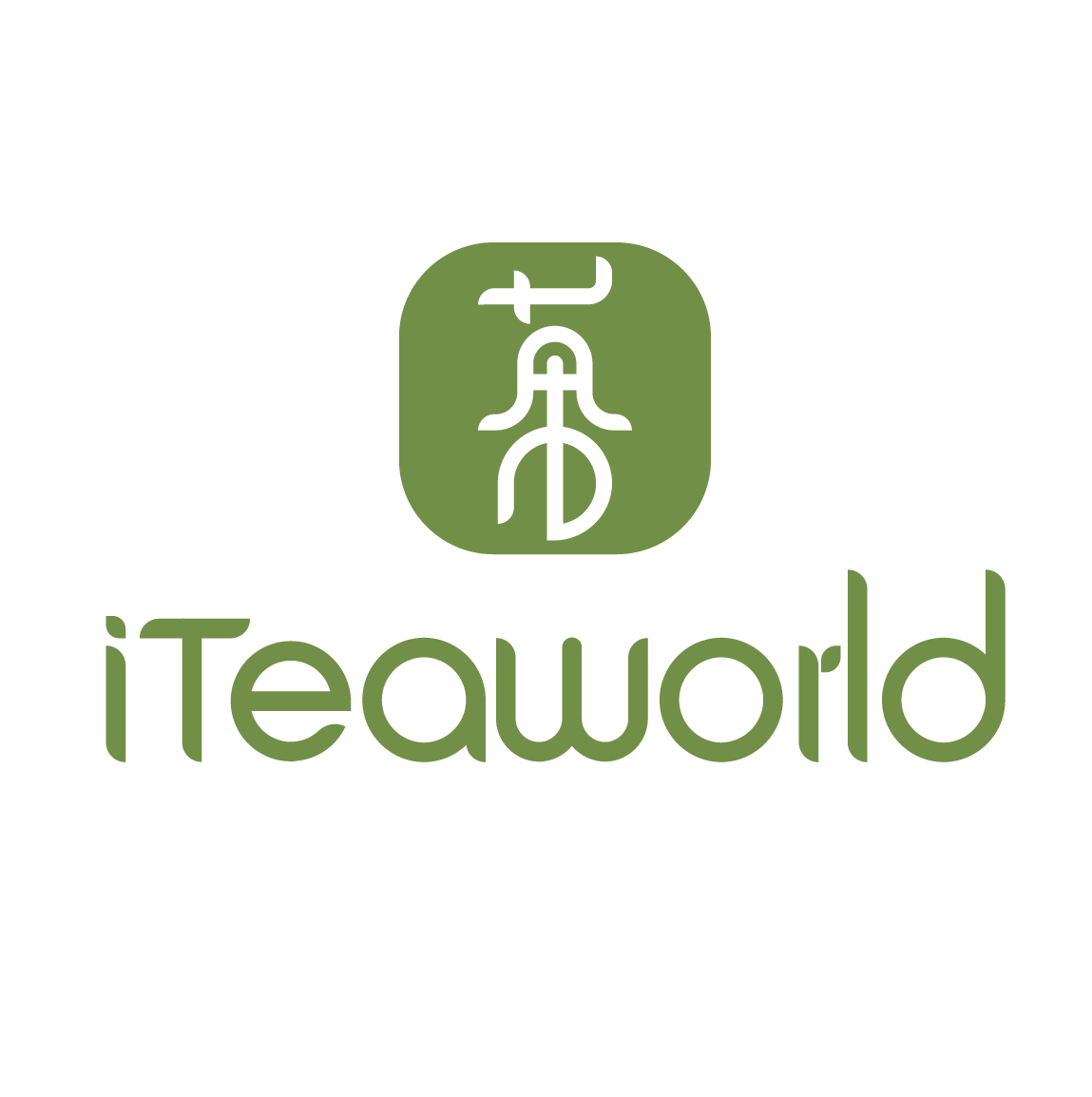Sort by:
177 products
177 products
Herbal Tea Jin Qian Liu: Also known as the “Money Tree,” this deciduous tree belongs to the walnut family and is found in several Chinese provinces, including Anhui, Jiangsu, and Zhejiang. It thrives in sunny environments, has deep roots, and grows quickly. Its wood is used for furniture, and its bark can be used to make tannin. The leaves can be made into health tea that helps lower blood pressure, blood sugar, and cholesterol. This tea is valued for its unique benefits in boosting immunity, offering antioxidant properties, and combating aging.
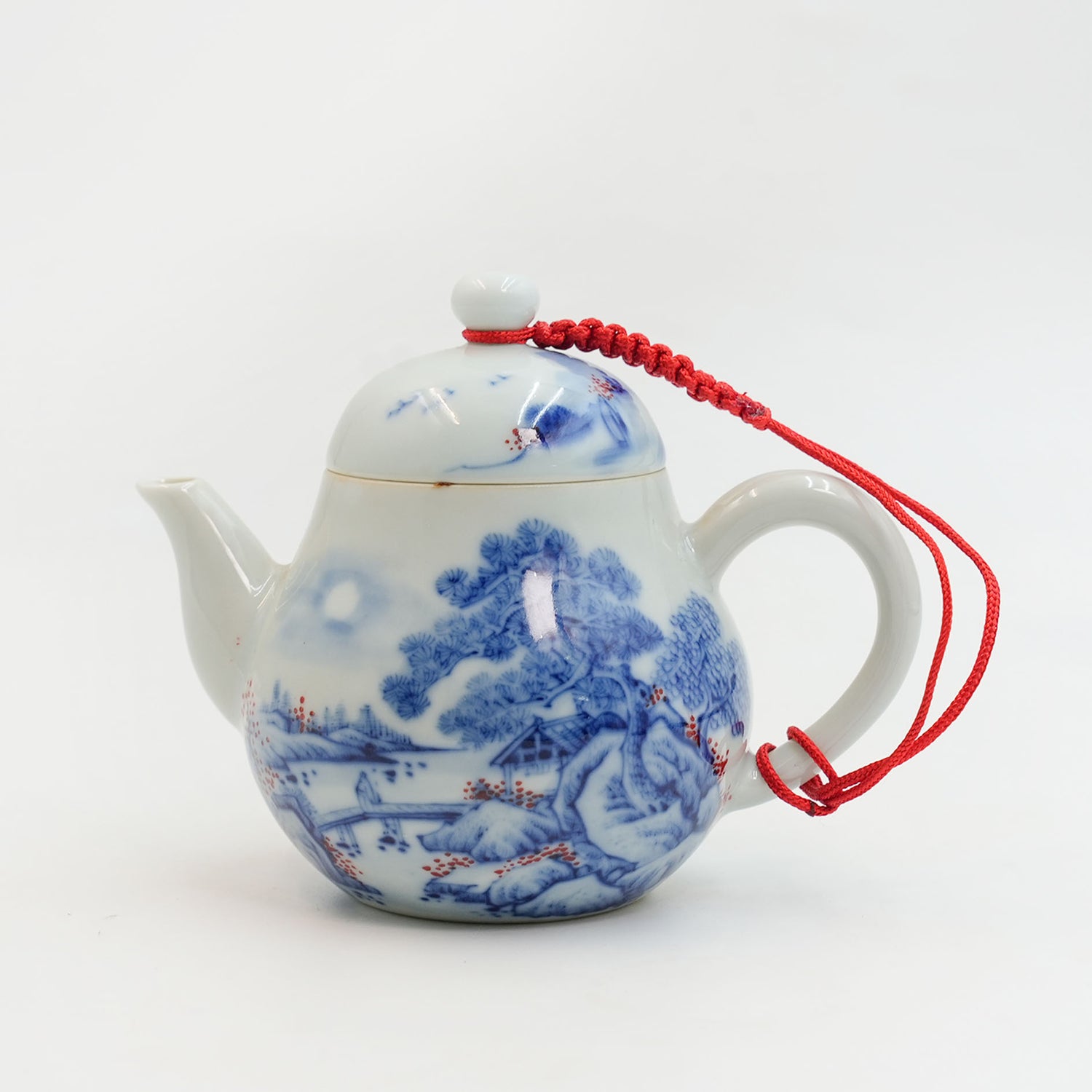

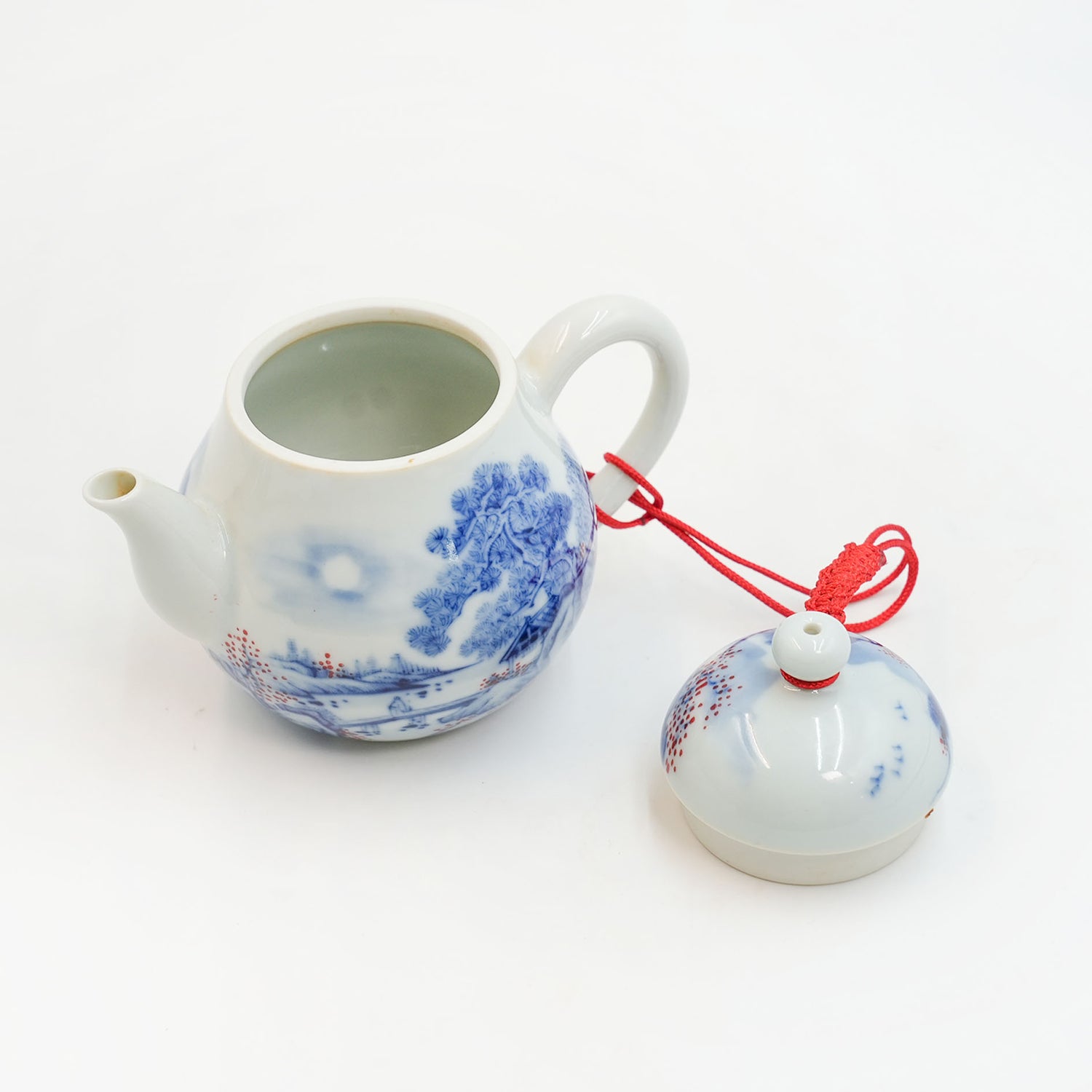
Jingdezhen Blue & White Porcelain Teapot – Hand-Painted – Only One in Stock (140ml)
$169.99 USD
Unit price perJingdezhen Blue & White Porcelain Teapot – Hand-Painted – Only One in Stock (140ml)
$169.99 USD
Unit price perProduct Description:
This tea set is an antique Jingdezhen teapot. It is hand-painted with a picture of a pine tree admiring the moon, with detailed carvings, and the bottom is carefully polished to avoid damaging the countertop. It is handwritten and signed, and the quality is guaranteed. It is fired at high temperature, with a uniform and translucent glaze, thick glaze, and a simple and elegant overall look.
Key Information:
Origin: Jingdezhen
Size: Width 11.5cm, Height 9.5cm
Capacity: 140ml
Weight: 153g
Blue-and-white porcelain:
Blue-and-white porcelain (Qinghauci), a gem of Chinese ceramic art, boasts a history spanning over a thousand years, originating in the Tang Dynasty and reaching its zenith during the Yuan, Ming, and Qing dynasties. Crafted on a white porcelain base with cobalt-blue pigments to create intricate patterns, it stands as one of China’s most iconic ceramics.
Renowned domestically and globally, blue-and-white porcelain graces museums and luxury art markets. Its distinctive designs—from floral motifs to landscape scenes—carry auspicious symbols of harmony. Each blue-and-white tea set transcends utility, embodying artistic mastery and the profound cultural heritage of traditional Chinese craftsmanship.
Recommended purchase:
For tea lovers: a handcrafted teaware that elevates the tea drinking experience.
For art collectors: a unique masterpiece that will never be replicated.
For interior design: an upgrade to any modern or classic space.
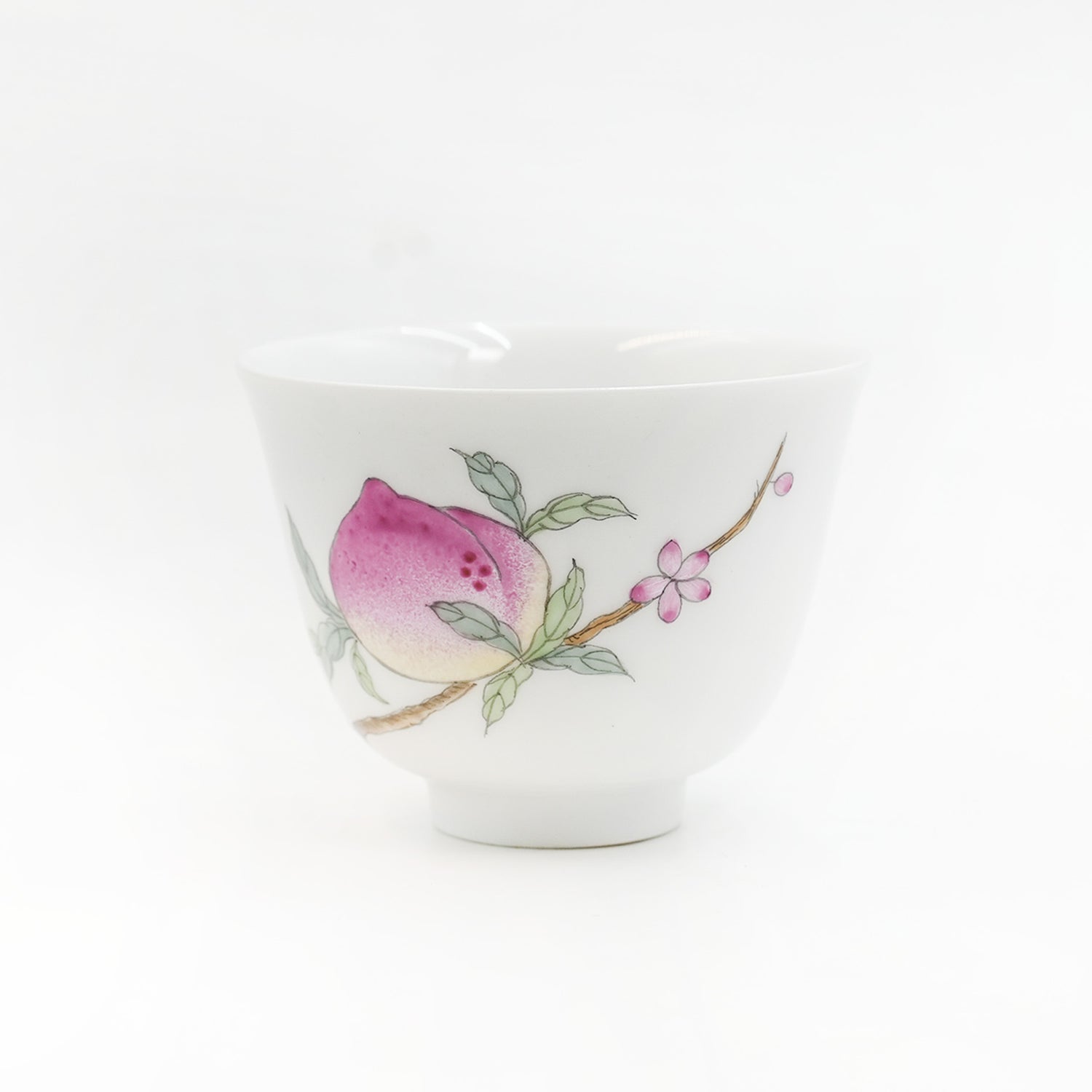
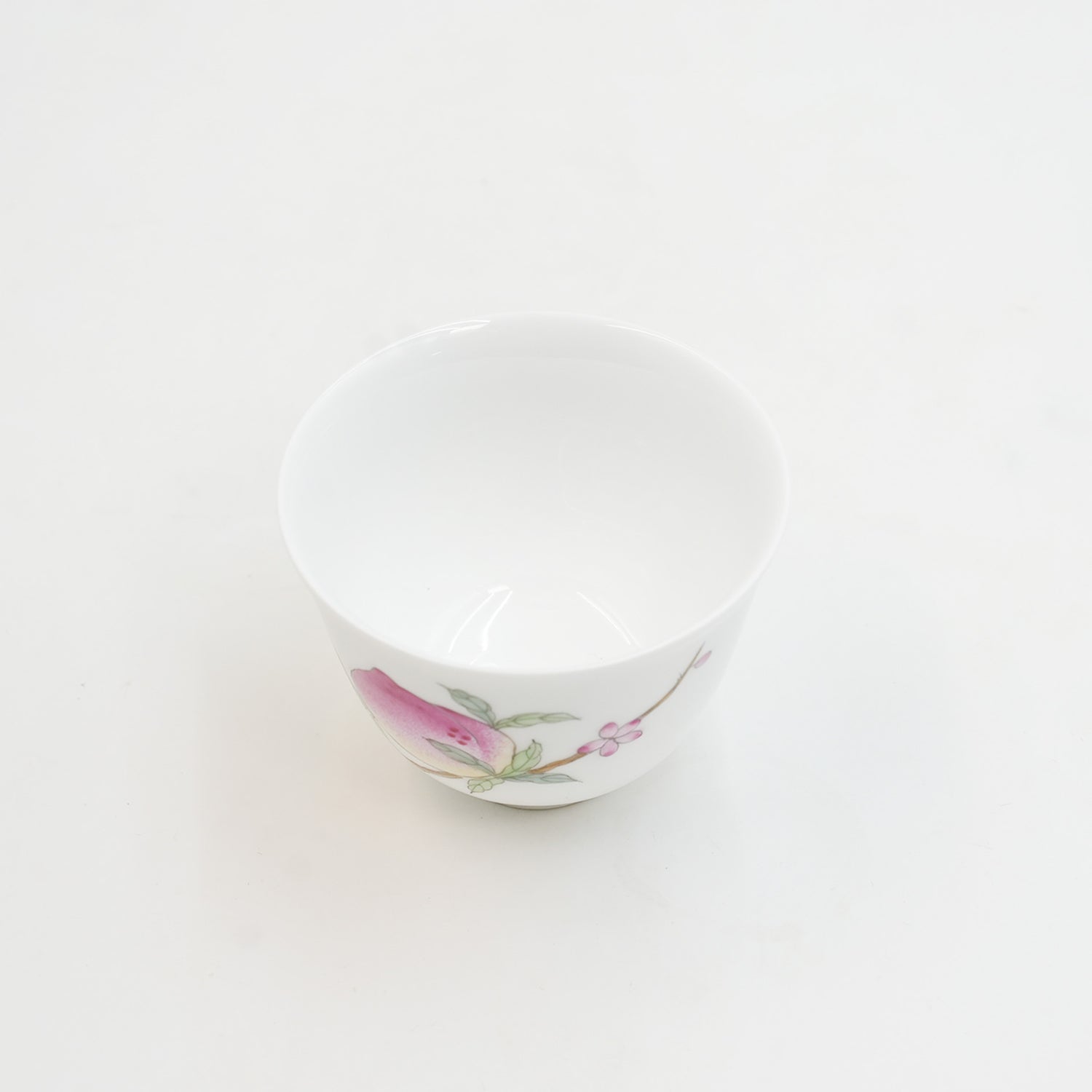
Jingdezhen Blue and White Teacup – Hand-Painted Peach Pattern – Only One Available (80ml)
$46.99 USD
Unit price perJingdezhen Blue and White Teacup – Hand-Painted Peach Pattern – Only One Available (80ml)
$46.99 USD
Unit price perProduct Description:
This tea set is a Jingdezhen hand-painted pastel peach tea cup, which uses fine brushwork and has a fine quality. The porcelain is thin, smooth and transparent, and can well present the color of the tea soup.
Key Information:
Origin: Jingdezhen
Size: 6cm wide, 5cm high
Capacity: 80ml
Weight: 47g
Blue-and-white porcelain:
Blue-and-white porcelain (Qinghauci), a gem of Chinese ceramic art, boasts a history spanning over a thousand years, originating in the Tang Dynasty and reaching its zenith during the Yuan, Ming, and Qing dynasties. Crafted on a white porcelain base with cobalt-blue pigments to create intricate patterns, it stands as one of China’s most iconic ceramics.
Renowned domestically and globally, blue-and-white porcelain graces museums and luxury art markets. Its distinctive designs—from floral motifs to landscape scenes—carry auspicious symbols of harmony. Each blue-and-white tea set transcends utility, embodying artistic mastery and the profound cultural heritage of traditional Chinese craftsmanship.
Recommended purchase:
For tea lovers: a handcrafted teaware that elevates the tea drinking experience.
For art collectors: a unique masterpiece that will never be replicated.
For interior design: an upgrade to any modern or classic space.
Introduction:
This Junshan Yinzhen (Silver Needle) tea is meticulously selected from the spring harvest of 2024. Plucked from high-altitude tea gardens in Yueyang, Hunan Province, at elevations of approximately 500 meters, the exceptional growing conditions impart a refreshing taste and rich, layered flavors. The plucking standard of primarily one bud and one leaf ensures a delicate, mellow taste with a sweet aftertaste, a bright yellow liquor, and a lasting, fresh aroma.
Reasons to Recommend:
- Core Production Area: Sourced from the secondary core production area outside Junshan Island, offering an affordable price while maintaining the authentic flavor profile of Junshan Yinzhen through traditional craftsmanship and tea variety.
- Unique Appearance: Junshan Yinzhen is characterized by its straight, plump buds with golden bodies covered in silvery hairs. When brewed, the tea leaves stand upright in the water, floating up and down before settling vertically at the bottom of the cup. This mesmerizing process is known as the "three rises and three falls."
- Strict Standards: The plucking and production of Junshan Yinzhen follow rigorous standards. It is harvested only once a year during a 7-10 day window around the Qingming Festival, ensuring the finest spring buds are selected.
- A Renowned Chinese Tea: Recognized as one of China's top ten famous teas, Junshan Yinzhen is the most well-known and beloved variety of yellow tea.
Oxidation Level: Low
Roasting Level: None
Tea Garden Soil: Sandy loam
Processing Time: Spring 2024
Best Before Date: 18 months
Tea Variety: Yueyang Group Variety
Recommended Purchase:
This authentic Keemun Black Tea from the core production area of Qimen County, Anhui, boasts a refined aroma that lingers, featuring unique notes of apple and orchid. It's best enjoyed plain to savor its natural floral and honey-like sweetness with a silky smooth finish. If you prefer bold flavors and plan to add milk and sugar, this tea might not be the perfect match for your taste.
Product Details:
Origin: Guanghui Village, Likou Town, Qimen County, Huangshan, Anhui Province
Harvest Date: April 15, 2024
Grade: Second Grade (Mao Feng), one bud and two leaves
Tea Cultivar: Qimen Zhuye (Qimen Broad Leaf Variety)
Craftsmanship: Traditional methods by tea master Feng Guochang
Flavor Profile: Distinctive "Keemun aroma" with apple and orchid notes, a refined and long-lasting fragrance, prominent floral and honey tones, and a sweet, smooth finish.
Highlight: An authentic Keemun Black Tea made from local tea trees in the core region, offering a perfect balance of flavor and richness—an excellent choice for everyday enjoyment.
About Keemun Black Tea:
Keemun Black Tea (or Qimen Hong Cha) originates from the Qimen region in Anhui Province, China, and its crafting technique is recognized as a UNESCO Intangible Cultural Heritage. Known as the "Champagne of Black Teas," it captivates tea lovers with its signature floral, fruity, and subtle smoky notes. During Victorian England, Keemun Black Tea was considered a luxury, often gracing royal and aristocratic tea tables. It became a staple in classic English Breakfast and afternoon tea blends. Compared to Ceylon and Assam teas, Keemun is more mellow and smooth, making it a refined choice for pairing with milk or sugar. Over time, it has earned its place as a luxurious favorite among Western black tea enthusiasts.
How to Brew
Water Temp: 203°F(or 95℃)
Tea-to-Water: 1g per 50ml
Steep Time: 20 sec for first 3 steeps, add 5 sec each time after
Teaware: White porcelain gaiwan
Re-Steep: 5-7 times
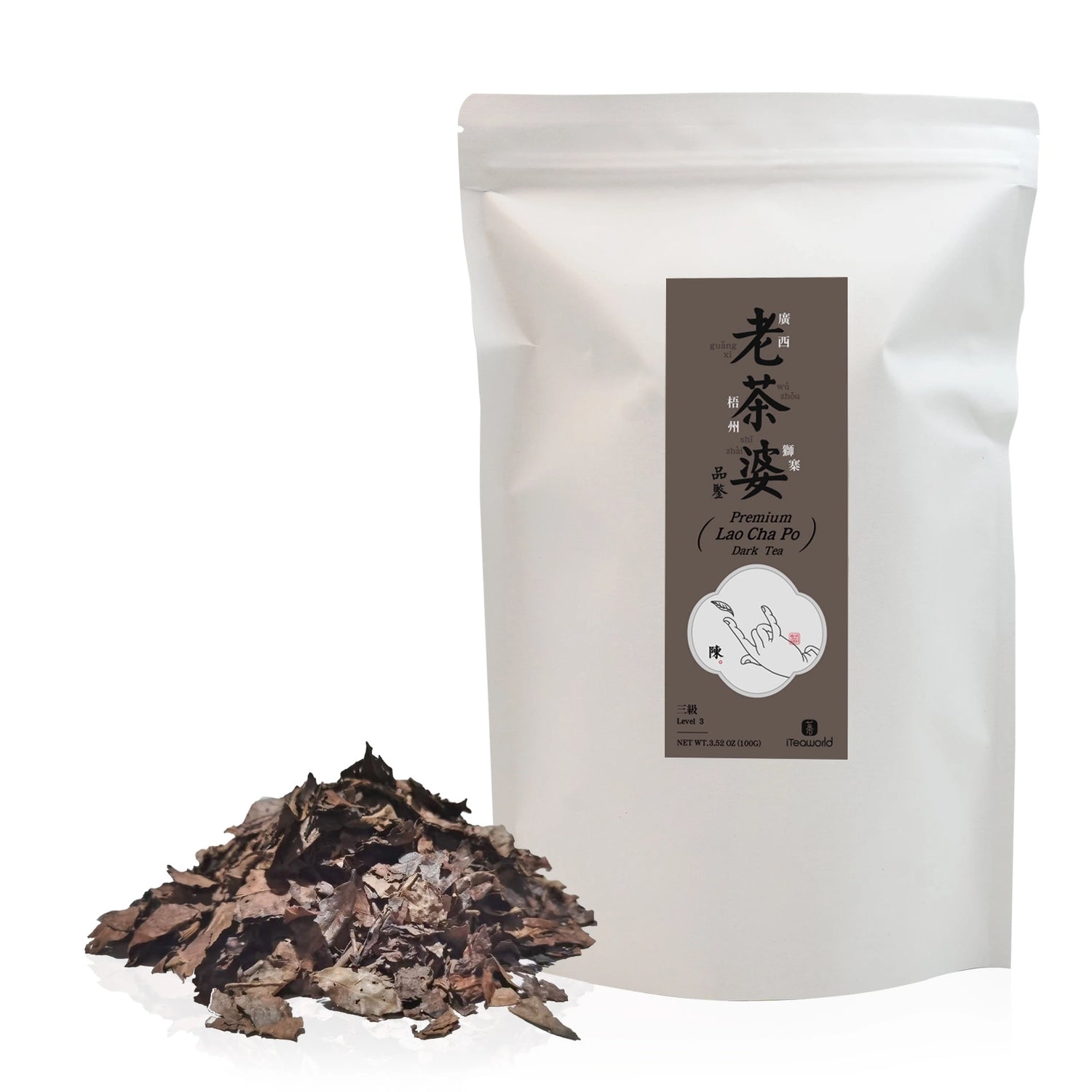
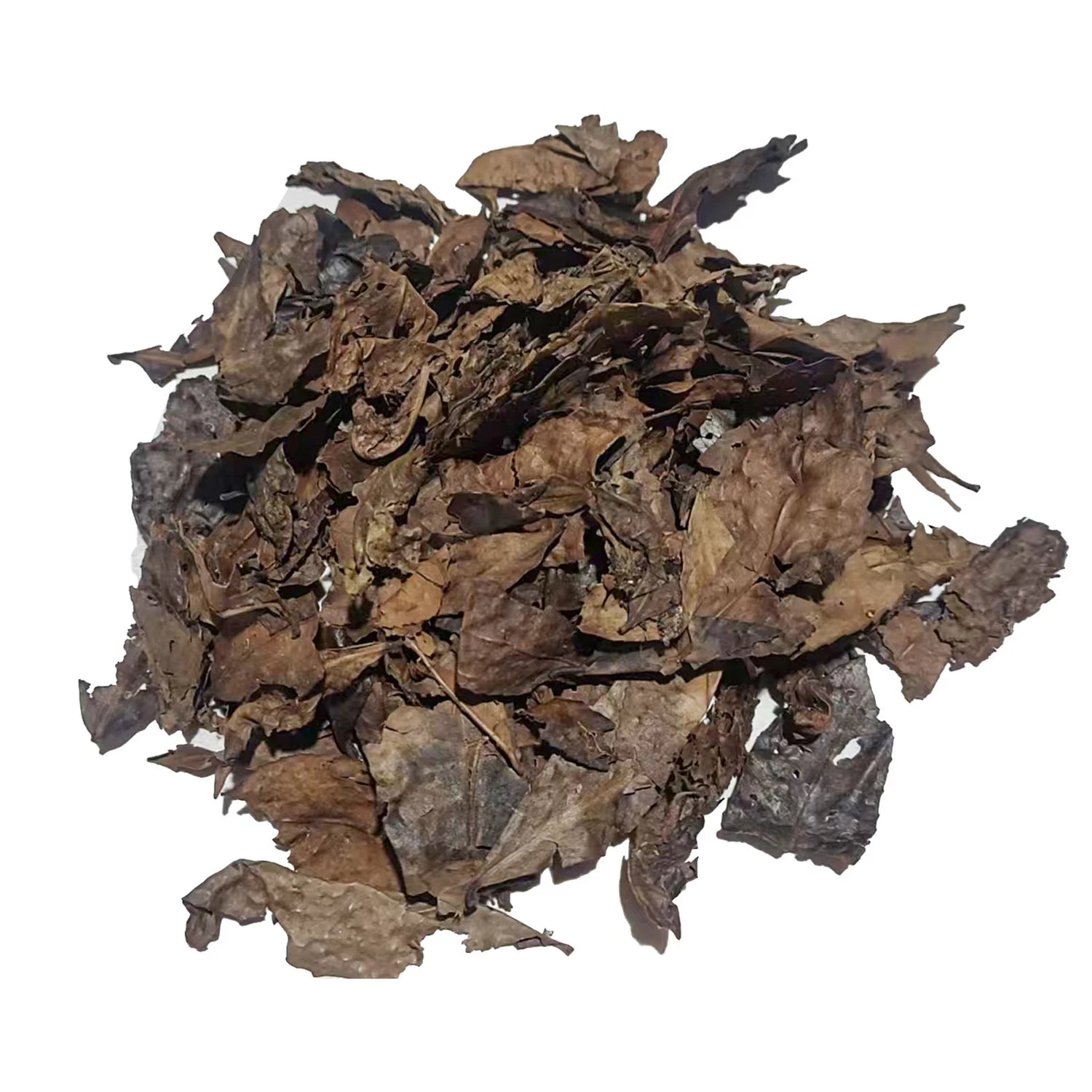
Lao Cha Po Liubao Dark Tea – Aged 2010, Wild Old Trees, Smooth & Sweet
$14.99 USD
Unit price perLao Cha Po Liubao Dark Tea – Aged 2010, Wild Old Trees, Smooth & Sweet
$14.99 USD
Unit price per“Lao Cha Po” specifically refers to old leaves (not tender buds) harvested one week before and after Shuangjiang (one of China’s 24 solar terms, around October 23, marking the start of colder weather). These are mostly coarse leaves from the current year or 2–3-year-old growth. “Cha Po” is the Liubao people’s respectful name for old leaves. In the past, farmers sold tender buds as high-quality tea, while coarse old leaves were kept as everyday tea. The name reflects the farmers’ wisdom of “making full use of what you have.”
Around Shuangjiang, large temperature differences and reduced rainfall make the old leaves thicker and richer in sugars and nutrients, giving the tea a natural cane sugar sweetness. Tea harvested at this time has less astringency and a smoother, naturally sweet taste.
This Lao Cha Po tea was brewed at the tea bar during the 15th Northwest Tea Festival and loved by everyone, receiving high praise.
This tea is made using the traditional Liubao “picking and cleaning old leaves” method: fresh leaves are briefly blanched in hot water, then sun-dried or air-dried. Blanching reduces bitterness, while the drying process, similar to white tea, preserves most of the tea’s natural compounds.
This batch of Lao Cha Po comes from wild, aged tea trees in Shizhai Town, Wuzhou City, with tree ages of 30–50 years, making the raw material rare. Because it uses old trees, even with only 20 years of aging, the tea exhibits flavor comparable to 30+ years aged tea. The tea has a distinct medicinal aroma and carries the forest-like character unique to old trees, offering a rich and unique flavor.
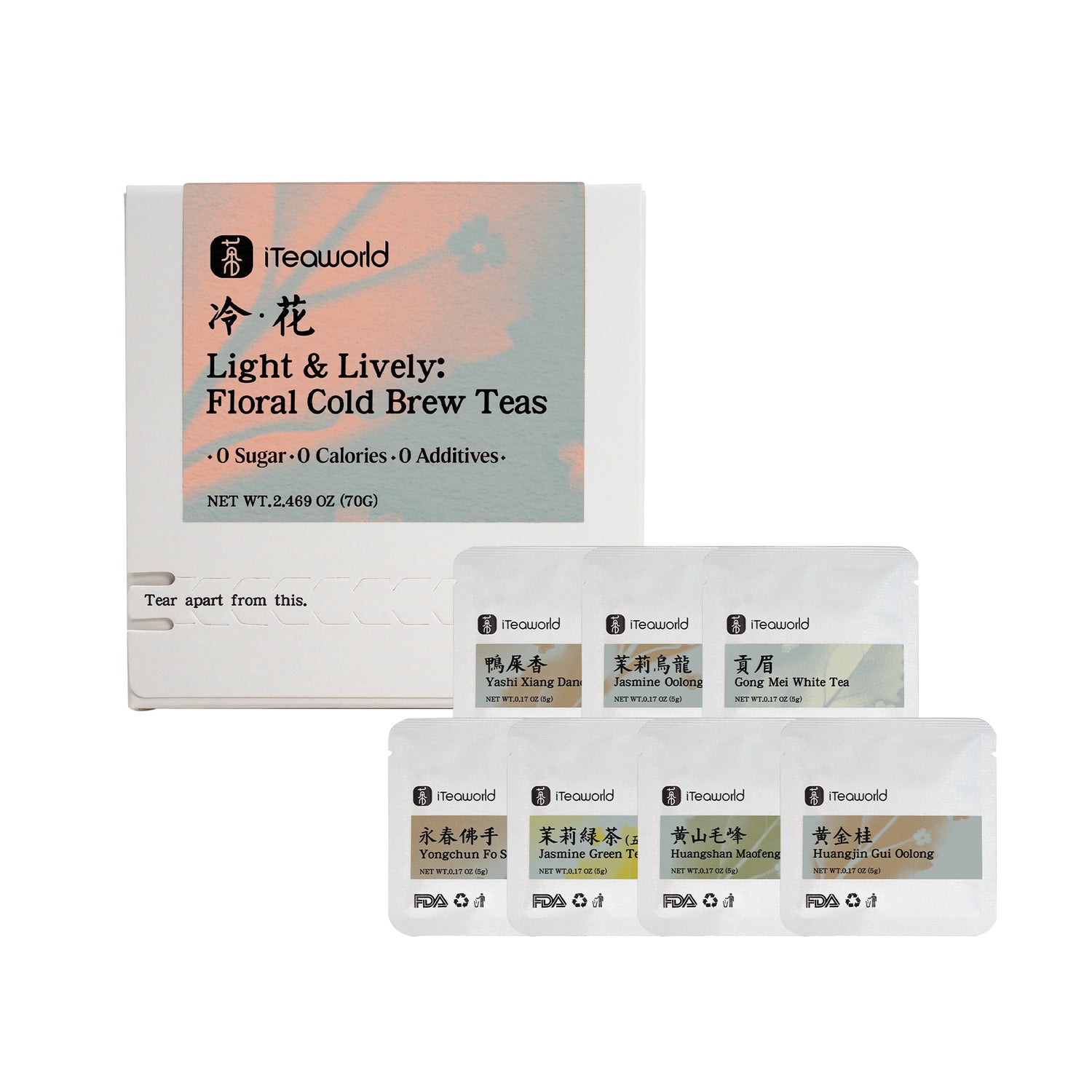
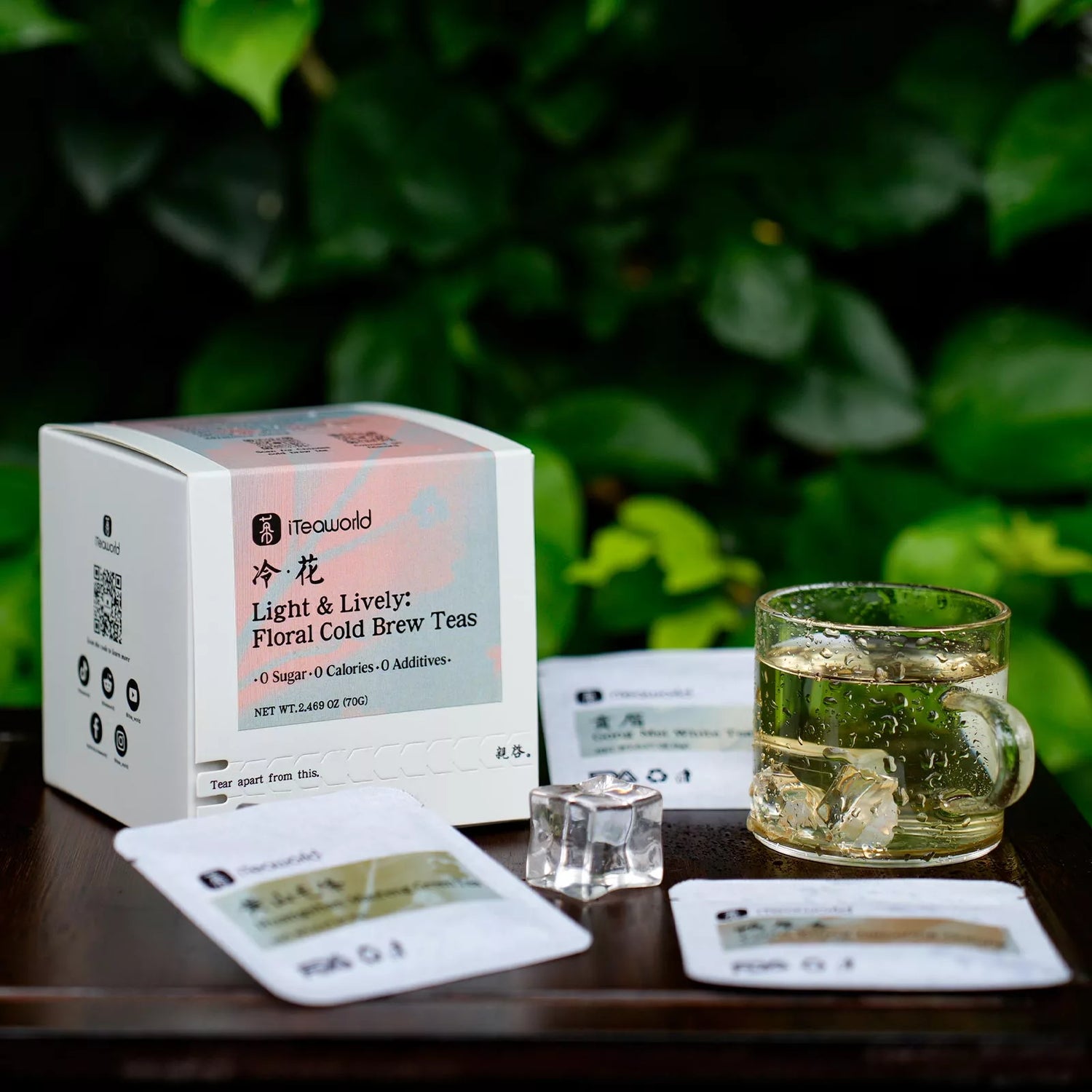
Light & Lively: Floral Cold Brew Teas | 0 Sugar · 0 Calories · 0 Additives - Whole Leaf | 14 Bags
$18.99 USD
Unit price $0.21 USD per gLight & Lively: Floral Cold Brew Teas | 0 Sugar · 0 Calories · 0 Additives - Whole Leaf | 14 Bags
$18.99 USD
Unit price $0.21 USD per gLight & Lively Floral Cold Brew Teas | 7 teas perfect for cold brewing.
This tea collection brings together 7 Chinese teas from four classic types — oolong, white, green, and floral tea. Each tea is pressed from loose leaf tea into compact discs, carefully selected from dozens of varieties for their light floral aroma and perfect compatibility with cold brewing.
Small, portable, and effortless to brew — it might just be the easiest and laziest way to steep tea, ideal for travel or as your everyday sampler.
Brewing Tip
For pressed tea discs like Gongmei, and Huangshan Maofeng, we recommend a quick rinse with hot water to open the leaves before cold brewing. This helps the tea release its flavor more quickly and evenly.
Introduction:
This 2018 Liubao tea is sourced from high-altitude tea gardens in Guilin, Guangxi, and made from high-grade one-bud-three-leaf material. After five years of aging, the tea has undergone sufficient fermentation and transformation, developing a unique flavor profile with a distinctive betel nut aroma, a bright red liquor, and a smooth, mellow taste with a slightly sweet aftertaste.
Reasons to Recommend:
- Core Production Area: Grown in Liubao Town, Wuzhou City, Guangxi, where the average annual temperature is 21.1°C, annual rainfall is 1503.6 mm, and annual sunshine duration is 1915 hours. The abundant rainfall and vast mountainous terrain create an ideal environment for tea cultivation.
- Unique Aroma: The "betel nut aroma" of Liubao tea originates from a faint "pine smoke fragrance" in newly made tea, which transforms into the distinctive "betel nut aroma" after prolonged aging. This aroma creates a lasting "cooling" sensation in the mouth.
- Rich History: Liubao tea flourished during the Tang and Song dynasties and reached its peak during the Ming and Qing dynasties. During the Jiaqing period of the Qing dynasty, it was recognized as one of China's 24 famous teas for its unique betel nut aroma.
- Dual Benefits: Liubao dark tea holds a special place in traditional Chinese medicine. It is both cooling and warming, said to eliminate excess dampness while providing warmth when needed.
Oxidation Level: None
Roasting Level: None
Tea Garden Soil: Yellow soil
Master Blender: Liu Yongqiang
Processing Time: 2018
Best Before Date: Suitable for permanent storage
Tea Variety: Guangxi Group Variety
Introducing Lu'an Guapian
a historic Chinese tea with a royal past, once a tribute only enjoyed by the imperial family. This precious green tea still upholds its unique traditional craftsmanship and flavor profile. Our gourmet Lu'an Guapian is handcrafted by a master tea maker with 30 years of experience, using leaves from the small-leaf tea plants in Qi Mountain, Lu'an, Anhui, grown at an altitude of 600 meters. Picked at the end of spring, the leaves are tender, with a rich aroma and a refreshing taste. Late spring teas offer a more affordable price compared to early spring teas, with a more pronounced tea flavor and a slightly reduced aroma.
Why choose our Lu'an Guapian?
It comes from the core production area of Lu'an Guapian in Lu'an City, Anhui Province, ensuring authenticity.
Crafted by a seasoned tea farmer with 30 years of tea-making experience.
Sourced from high-altitude tea plants at 600 meters, which are less susceptible to ecological pollution and offer a superior freshness and aroma.
Directly purchased from local tea farmers, offering a higher cost-performance ratio.
Made exclusively from the newest 2024 spring harvest.
Who is it suitable for?
Entry-level consumers or daily tea drinkers who want to experience the classic Chinese green tea, Lu'an Guapian.
Those seeking high cost-performance without compromising quality.
Tea drinkers who enjoy a fresh, slightly bitter, and sweet taste.
Consumers who dislike seaweed flavors and prefer a strong green tea aroma.
Not suitable for:
Those who prefer strong roasted or smoky flavors.
Advanced tea drinkers seeking more intense and complex flavors.
Tea connoisseurs looking for a higher level of sweetness.
Introduction:
This collection offers a unique opportunity to explore the subtle differences in flavor, aroma, and texture created by three distinct tea tree varietals, all using the same harvesting grade: one bud and two leaves. You’ll experience Longjing (Dragon Well) green tea made from three renowned tea tree varietals: Wu Niu Zao, Longjing #43, and the heritage Longjing Qunti. Though harvested and processed in the same way, each tea reflects its unique tree’s characteristics. This collection allows tea lovers to discover their preferred varietal of this classic green tea.
Net weight of tea: 45g, including:
Longjing Green Tea (Wuniuzao variety): 15g
Longjing Green Tea (Qunti variety): 15g
Longjing Green Tea (Longjing 43 variety): 15g
The origins of the 3 types of Longjing tea: Tianmu Mountain, Shengzhou City, Shaoxing, Zhejiang Province, China.
Key Benefits:
Explore Different Varietals: Taste the difference between three tea tree types that shape the final flavor and texture of Longjing tea.
Educational Tasting Experience: Perfect for tea enthusiasts looking to learn about how different varietals affect tea’s character.
Authentic Craftsmanship: Each tea is crafted using traditional methods to retain the unique characteristics of each varietal.
Heritage and Innovation: From the traditional Qunti varietal to the newer Longjing #43, this collection offers a blend of tradition and modern cultivation.
Recommendation Reasons:
Understand Varietal Differences: This collection is designed for those who want to explore how tea tree varietals influence the taste and mouthfeel of Longjing tea.
Same Harvesting Grade, Different Flavors: You get to compare teas made from the same harvesting standard (one bud and two leaves) but from different varietals, highlighting subtle yet meaningful differences in flavor.
Quality and Expertise: Made by experienced tea masters, this collection brings the highest quality Longjing green tea directly to your cup.
Value for Tea Enthusiasts: This curated set offers a chance to taste and compare teas that are not always easy to find in Western markets.
We noticed that many popular Longjing teas are "knife-cut" varieties. These Green Tea are made from leaves cut after high-grade teas have been hand-harvested. As a result, they contain more stems, and the leaves are often incomplete, producing a weaker flavor and possibly coming from non-authentic Longjing varieties. We wanted to offer a Longjing tea that delivers the authentic taste, variety, and craftsmanship at an entry-level price, allowing more people to experience the true flavors of this iconic tea.
Why choose our Longjing?
Craftsmanship: Handcrafted by a Longjing master with over 30 years of experience, our tea combines traditional techniques and modern refinement.
Seasonal Selection: We’ve chosen 谷雨茶 (Grain Rain) tea, which is harvested just after Qingming tea. The taste difference is minimal, but the price is significantly more affordable.
High-Altitude Quality: Our tea comes from Zhejiang Lishui’s Longjing heirloom variety. The climate and high altitude (900-1000 meters) offer conditions similar to West Lake, but with superior pricing and quality.
Leaf Grade: Selected for its high grade—one bud, two leaves—this tea is always made from the freshest spring harvest of the current year, ensuring it is new every year. Ideal for those who enjoy a clean, refreshing taste with signature chestnut and bean notes.
Precision Hand-Picking: Each batch is handpicked to ensure no stems and minimal tea dust, ensuring a purer brew with authentic flavor.
This tea is perfect for:
Tea lovers seeking an authentic Longjing experience with superior craftsmanship, and flavor,
People needing a mild caffeine boost, as Longjing’s caffeine content is moderate, helping with focus and alertness,
Tea culture enthusiasts, as Longjing is one of China’s top 10 famous teas with a rich history and tradition.
If you're looking for an entry-level authentic variety, craftsmanship, and flavor in Zhejiang Longjing, this is the most cost-effective option we could find!
A semi-fermented oolong tea grown in the rocky crevices of Fujian’s Wuyi Mountain, renowned for its unique "rock bone floral aroma" (Yan Yun). Only tea cultivated within Wuyi City’s protected region can bear this name. Other areas (e.g., Anxi) do not produce Rock Tea.
This collection features the three most iconic Wuyi rock teas—Da Hong Pao, Shuixian, and Rougui—along with their key variations. You’ll taste the difference between blended and purebred Da Hong Pao, young and old Shuixian trees, and core vs. semi-core Rougui. A guided journey into the depth and complexity of Wuyi rock tea.
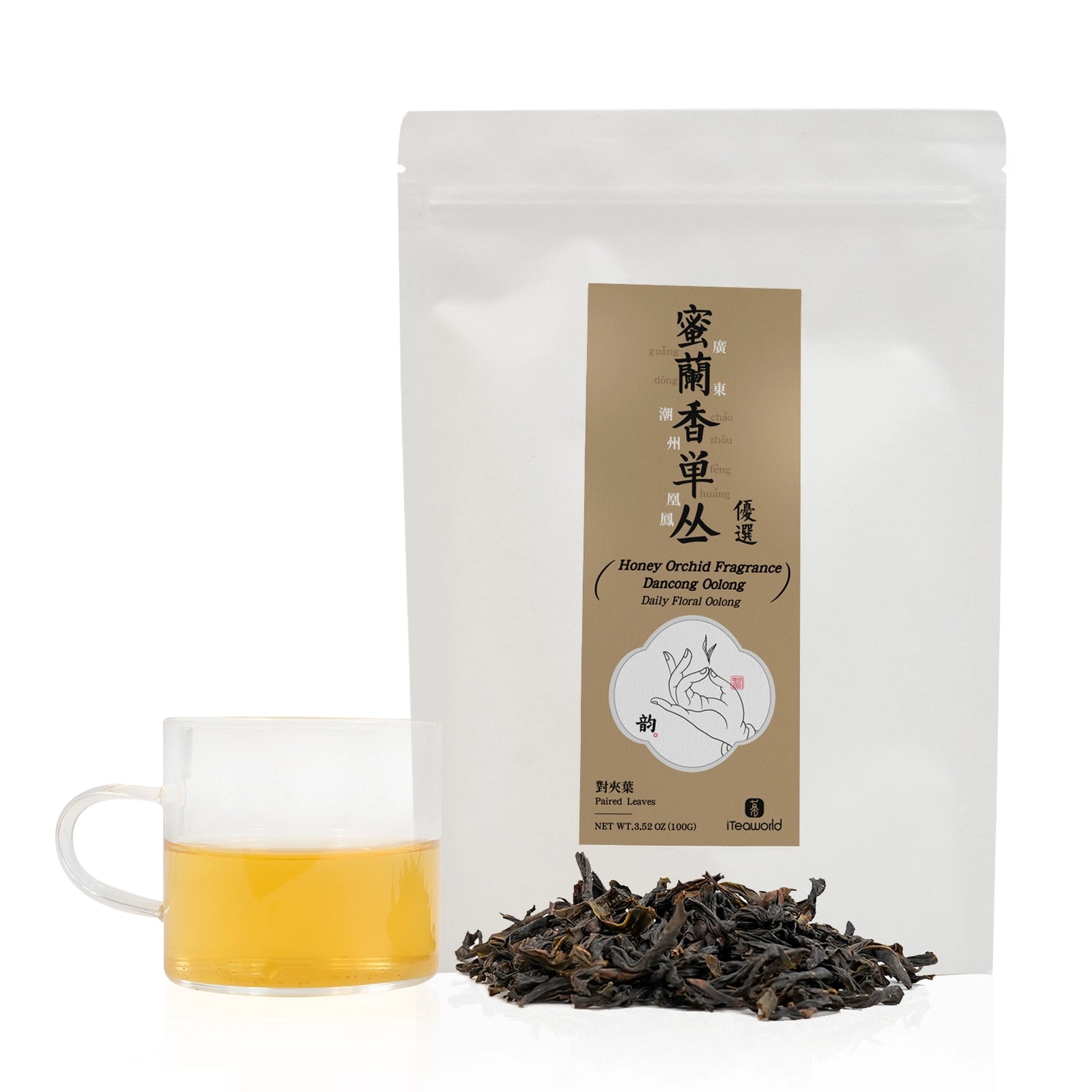
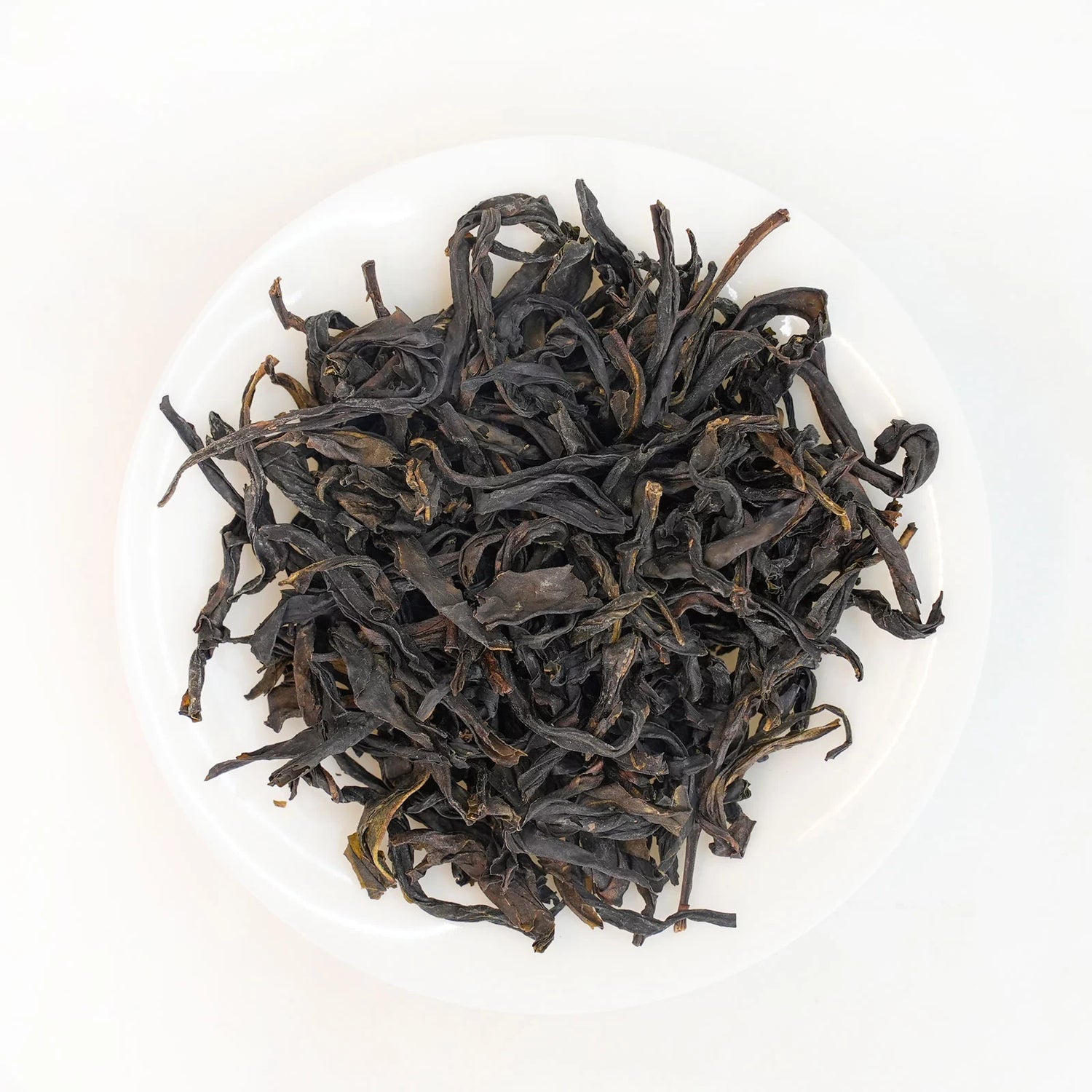
Mi Lan Xiang Dancong (Honey Orchid Aroma) oolong tea 100g for daily use (2025 spring)
$24.99 USD
Unit price perMi Lan Xiang Dancong (Honey Orchid Aroma) oolong tea 100g for daily use (2025 spring)
$24.99 USD
Unit price perFenghuang Dancong (Mi Lan Xiang)|凤凰单枞蜜兰香
Introduction
Mi Lan Xiang Dancong is one of the most celebrated Phoenix Dancong oolongs, known for its naturally rich honey-orchid aroma. The medium-twisted, dark dry leaves brew into a golden amber liquor, offering a full-bodied taste with layers of floral and fruity sweetness. Its nectar-like smoothness lingers across multiple infusions, with a refreshing aftertaste that deepens as you brew.
This tea comes from a village located in one of the premium zones for Zhongshan Dancong—an area recognized by locals as the gateway to the high-mountain growing region. Teas from this zone are considered top-grade among commercial Dancongs, offering exceptional quality for the price. The tea is crafted by a seasoned tea maker from a family with a long tradition of tea-making, with over 20 years of hands-on experience.
Origin: Fengxi Village, Fenghuang Town, Guangdong | 500m
Oxidation: 40-50% | Roast: Medium (100-120°C, 6-10h)
Tea Maker: Liu Chengpeng, a second-generation tea artisan with over 20 years of tea-making experience in a family that has crafted Dancong tea for generations.
Cultivar: Mi Lan Xiang Dancong
Harvest: April 2025 (Spring)
Elevation: 500-600m
Oxidation: Medium (40–50%)
Roast: Light (traditional charcoal finishing)
Shelf Life: 3 years
Storage: Store in an airtight container in a cool, dry, and odor-free place. For light-roasted Dancong, refrigeration is recommended to preserve its floral aroma.
Brewing
Vessel: Porcelain gaiwan / thin clay pot
Water: Spring/pure, 100ml : 5g tea, 100°C|212°F
Steeping: 1st-3rd: 8-12s; 4th-7th: +5-10s per steep
Flavor
Aroma: Orchid (main), honey, ripe fruit notes
Taste: Thick like honey | Smooth as nectar
Aftertaste: Lingering >1min, cooling floral finish
Occasions
Morning indulgence (energizing yet smooth)
Afternoon relaxation (floral aroma soothes the mind)
Cold brew (4°C, 2h; enhances fruity notes)
The Northern Fujian region is considered the birthplace of Oolong tea, and the traditional crafting methods of Wuyi Rock Tea have been recognized as part of China’s intangible cultural heritage. This collection brings together iconic oolong varieties from the Song Dynasty (Wuyi Qizhong and Jian'ou Dwarf Oolong) to today (Blended Da Hong Pao, Wuyi Rougui, Aged Tree Shuixian Oolong ), along with emerging cultivars with great future potential (Rui Xiang Oolong). Each tea carries the unique craftsmanship of the region, with its own distinct story and flavor. We hope this collection will allow you to explore the diverse flavors and rich cultural heritage of Northern Fujian (Minnan) Oolong tea.
A Journey of Fire and Technology
"For centuries, Chinese oolong tea masters have debated: the slow dance of charcoal fire or the precision of electric heat? This kit invites you to explore two roasting philosophies through Phoenix Dancong and Wuyi Rock Tea – one shaped by ancestral wisdom, the other refined by technology."
Product Contains:
Charcoal-Roasted Wuyi Rougui* 20 g
Electric-Roasted Wuyi Rougui* 20 g
Charcoal-Roasted Mi Lan Xiang Dancong* 20 g
Electric-Roasted Mi Lan Xiang Dancong* 20 g
Product Information (Wuyi Rougui)
Type: Semi-Rock (Ban Yan)
Origin: Jingshui Village, Xingcun Town, Wuyishan City, Fujian Province, China
Altitude: 400m
Producer: Chen Hui
Processing Timeline: Maocha: April 2024; Initial Roasting: August 2024; Final Roasting: November 2024
Product Information (Mi Lan Xiang Dancong)
Origin: Fengxi Village, Fenghuang Town, Chaozhou City, Guangdong Province, China
Altitude: 600–800m
Tree Age: ~30 years
Producer: Lin Zhiqiang
Processing Timeline: Maocha: April 2024; Initial Roasting: August 2024; Final Roasting: November 2024
Charcoal Roasting: The Art of Traditional Oolong
Charcoal roasting is the soul of traditional oolong tea. Using slow, low heat from wood like longan or lychee, it transforms the leaves, creating a rich flavor profile with caramel sweetness, mineral notes, and a smoky depth.
This method is perfect for Wuyi Rock Tea and Phoenix Dancong, turning grassy flavors into smooth, complex profiles and bringing out caramel and fruit-like sweetness.
Compared to modern electric roasting, charcoal roasting offers:
Better texture — glossy dark brown leaves vs. greenish-brown
Richer aromas — smoky and natural tea fragrances vs. a single roasted flavor
More infusions — over 8 brews vs. 5
Longer shelf life — improves over 5+ years vs. needing to be consumed within the year
Despite challenges like higher carbon emissions, charcoal roasting is essential for high-end oolong, much like oak barrels for fine wine. It elevates tea from "fresh leaves" to a living, evolving art.
Electric Roasting: The Modern Approach to Oolong Tea
Electric roasting is a key technique in modern oolong tea production, offering significant advantages in efficiency and consistency. Using electric heating elements, the temperature is precisely controlled between 70-130°C, with roasting time typically ranging from 2-5 hours. This process improves production speed compared to traditional charcoal roasting.
One of the standout features of electric roasting is its digital temperature control, maintaining a stable temperature within ±5°C. This eliminates the uneven heat fluctuations common in charcoal roasting, making it ideal for light-fermented oolongs that preserve fresh floral and fruity aromas.
In terms of flavor, electric-roasted teas shine with vibrant floral notes and a refreshing taste. The tea is clear and bright in color. While it lacks the rich depth of charcoal-roasted teas, it meets the demand for light, refreshing tea that modern consumers crave.
How to Brew?
Teaware: Yixing teapot (preferably zhuni clay) or thick-walled gaiwan
Water Quality: Spring water or soft water (hardness < 50 mg/L)
Tea-to-Water Ratio: 5g tea / 100ml water
Water Temperature: 100°C (boiling)
Rinse: Quick rinse with boiling water (under 5 seconds); discard the first infusion
Steeping Times:
Infusions 1–3: 15 seconds each
Infusions 4–10: Mi Lan Xiang: increase by 5 seconds per infusion
Wuyi Rougui: increase by 5–10 seconds per infusion
Explore the World of Chinese Oolong Tea with Four Iconic Varieties
Discover the rich diversity of Chinese Oolong tea with this curated sampler featuring Da Hong Pao, Tie Guan Yin, Phoenix Dan Cong, and Zhangping Shui Xian. From lightly oxidized teas to deeply roasted rock teas, this set is a perfect introduction for tea lovers who want to explore the full spectrum of oolong flavors.
- Da Hong Pao: Bold and toasty, from Wuyi Mountains
- Tie Guan Yin: Light, floral, and elegant — a classic minnan oolong tea
- Fenghuang Dan Cong: Naturally fruity with rich orchid aroma
- Zhangping Shui Xian: Rare pressed oolong with subtle garden notes
Whether you're new to oolong or seeking variety, this set offers a sensory journey across China’s top tea regions, all in one elegant collection.
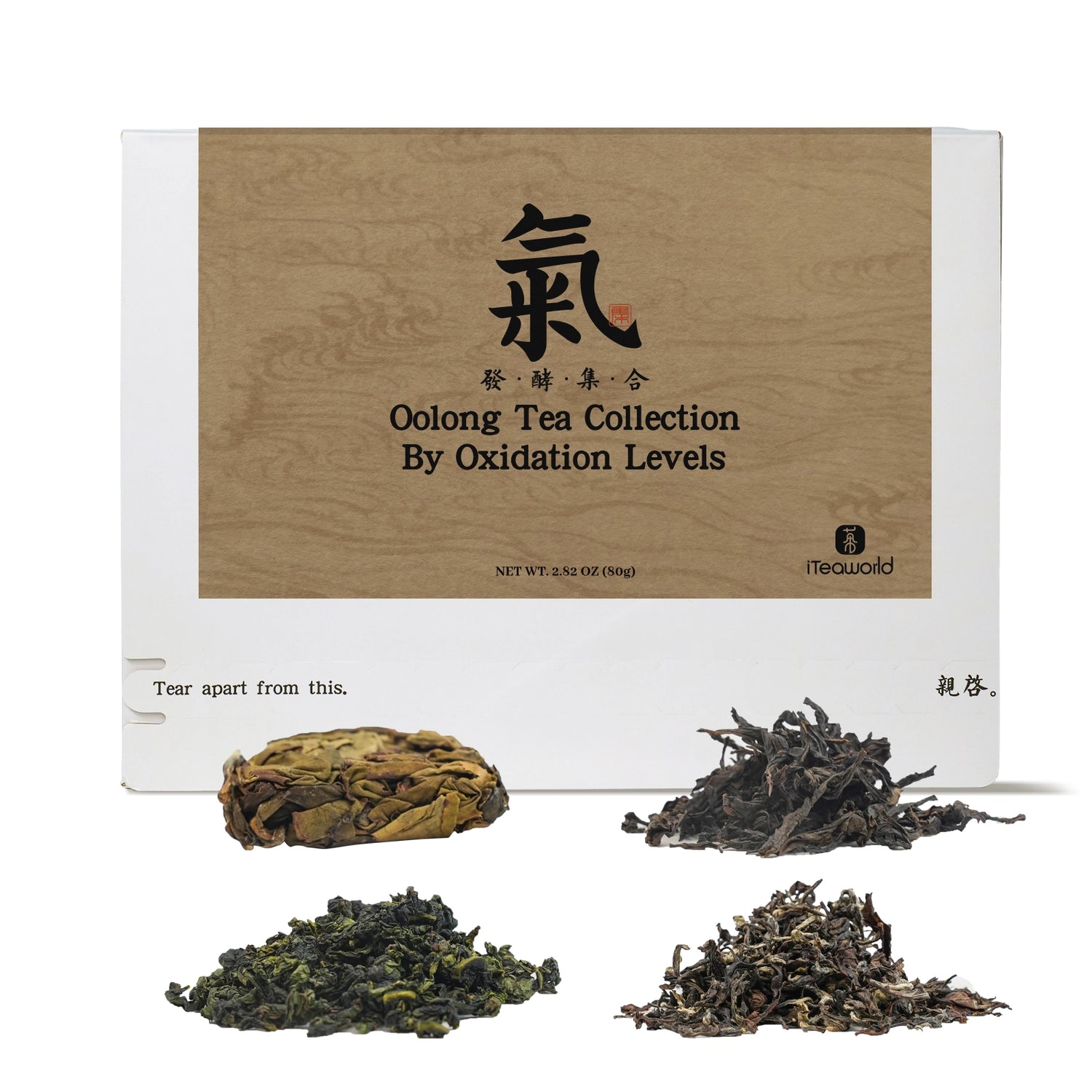
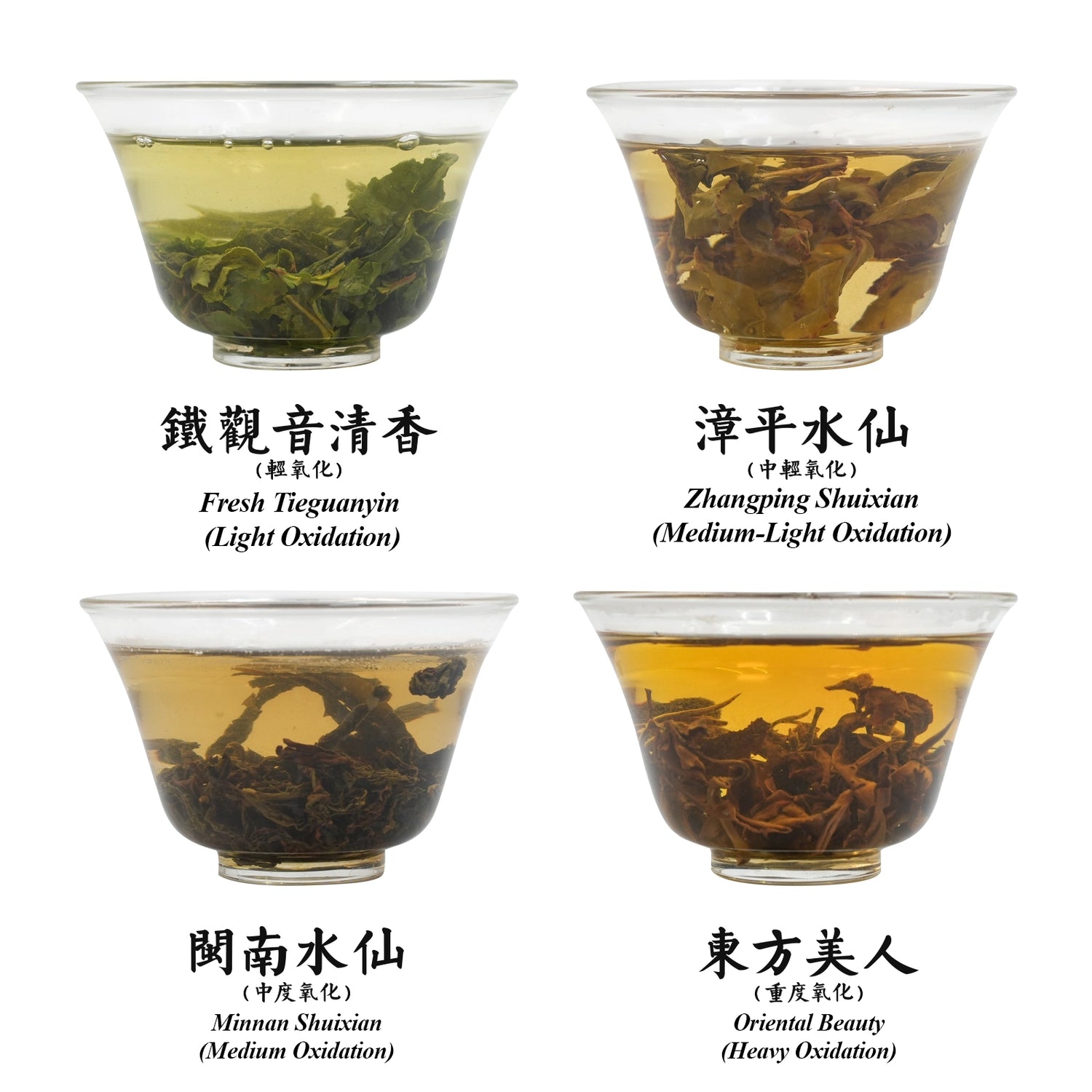
Oolong Tea Comparison Set: 4 Oxidation Levels (Tieguanyin to Oriental Beauty) 80g
$34.99 USD
Unit price perOolong Tea Comparison Set: 4 Oxidation Levels (Tieguanyin to Oriental Beauty) 80g
$34.99 USD
Unit price perOolong Tea: The Balance of Oxidation
Oolong tea is a partially oxidized tea, with oxidation levels ranging from 10% to 70%. Oxidation plays a key role in shaping the tea's aroma and the brightness of its flavor. Light oxidation creates fresh floral and fruity notes, while higher oxidation brings out richer, more mature fruit or honey-like aromas.
Lightly Oxidized Oolong (10%–25%): Examples like Wen Shan Baozhong and light-roast Tieguanyin showcase fresh floral and fruity scents.
Moderately Oxidized Oolong (25%–50%): Teas such as Phoenix Dan Cong and medium-roast Tieguanyin have a balanced profile, combining floral notes with hints of honey, fruit, or roasting, resulting in a complex aroma.
Heavily Oxidized Oolong (50%–70%): Classics like Da Hong Pao, Wuyi Rougui, and Oriental Beauty deliver mature fruit aromas, roasted or caramel-like notes, and a smooth, full-bodied brew.
This product includes four renowned oolong teas, all lightly roasted but with varying oxidation levels. It’s the perfect way to explore how different oxidation levels influence the flavor and aroma of oolong tea.
Products Included:
- Fresh Tieguanyin (Light Oxidation) 20g
- Zhangping Shuixian Oolong Tea (Medium-Light Oxidation) 20g
- Minnan Shuixian (Medium Oxidation) 20g
- Oriental Beauty (Heavy Oxidation) 20g
Origin:
- Fresh Tieguanyin: Longjuan Village, Longjuan Township, Anxi County, Fujian Province, China
- Zhangping Shuixian:Beiliao Village, Nanyang Town, Zhangping City, Fujian Province, China
- Minnan Shuixian:Wuxi Village, Wufeng Town, Yongchun County, Quanzhou City, Fujian Province, China
- Oriental Beauty:Neiyang Village, Pingshan Township, Sanming City, Fujian Province, China
Master Blender:
- Fresh Tieguanyin: Chen Qizhi
- Zhangping Shuixian:He Meiqing
- Minnan Shuixian:Xu Yongyuan
- Oriental Beauty:Li Jianmin
Processing Time:
- Fresh Tieguanyin: November 2024
- Zhangping Shuixian:June 2024
- Minnan Shuixian:December 2024
- Oriental Beauty:early June 2024
Best Before Date:24months
Tea Variety:
- Tieguanyin: Tieguanyin Varieties
- Zhangping Shui Xian: Minnan Shuixian Varieties
- Minnan Shuixian: Jianyang Shui Xian Varieties
- Oriental Beauty: Jin Xuan variety
Altitude:
- Tieguanyin: 800-900 meters
- Zhangping Shui Xian: 400-500 meters
- Minnan Shuixian:900-1000 meters
- Oriental Beauty:1100 meters
Soil Type:
- Tieguanyin: red soil
- Zhangping Shui Xian: yellow and red soil
- Minnan Shuixian: red soil
- Oriental Beauty:Red soil
Oxidation Level:
- Tieguanyin: Light oxidation (10-20%)
- Zhangping Shui Xian: Mild-light oxidation (25-30%)
- Minnan Shuixian: Medium oxidation (40-50%)
- Oriental Beauty:Heavy oxidation (60-70%)
Roasting Level:
- Very light roast, 70-80°C (158-176°F)
Roasting Method (Charcoal or Electric):
- electric roasting
Brewing Recommendations:
Chinese-Style Oolong Brewing
Teaware: Gaiwan or clay teapot
Water Temp: 212°F (100°C)
Tea-to-Water Ratio: 1g per 0.7 oz (20ml)
Steep Time: 10-15 sec (1-3 steeps), add 5-10 sec after
Re-Steep: Up to 7 times
Western-Style Oolong Brewing
Teaware: Teapot, infuser, or French press
Water Temp: 90-100°C (194-212°F)
Tea-to-Water Ratio: 1 tsp (2-3g) per 8 oz (240ml)
Steep Time: 3-5 minutes
Re-Steep: Up to 3 times, adding 1-2 minutes each time





